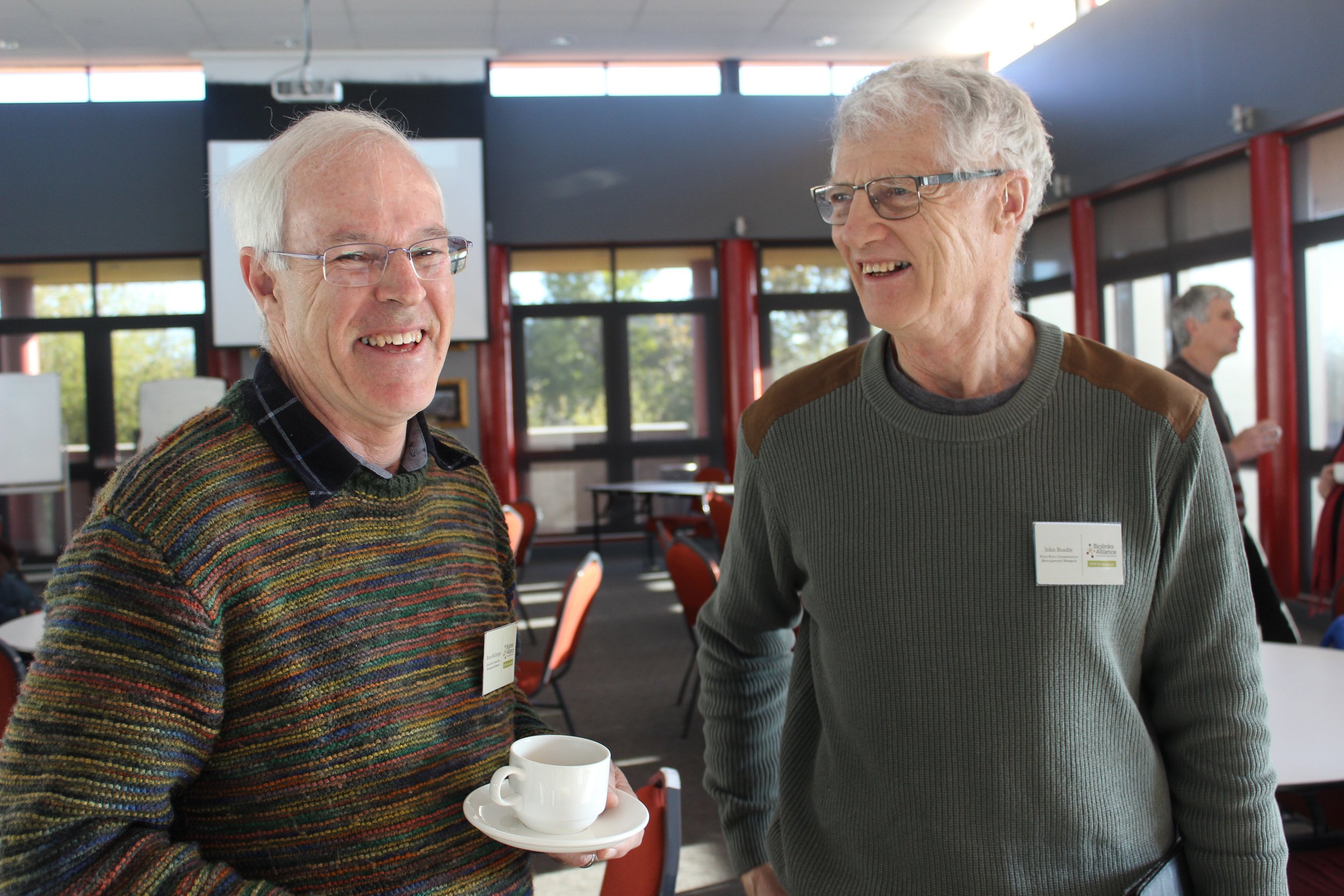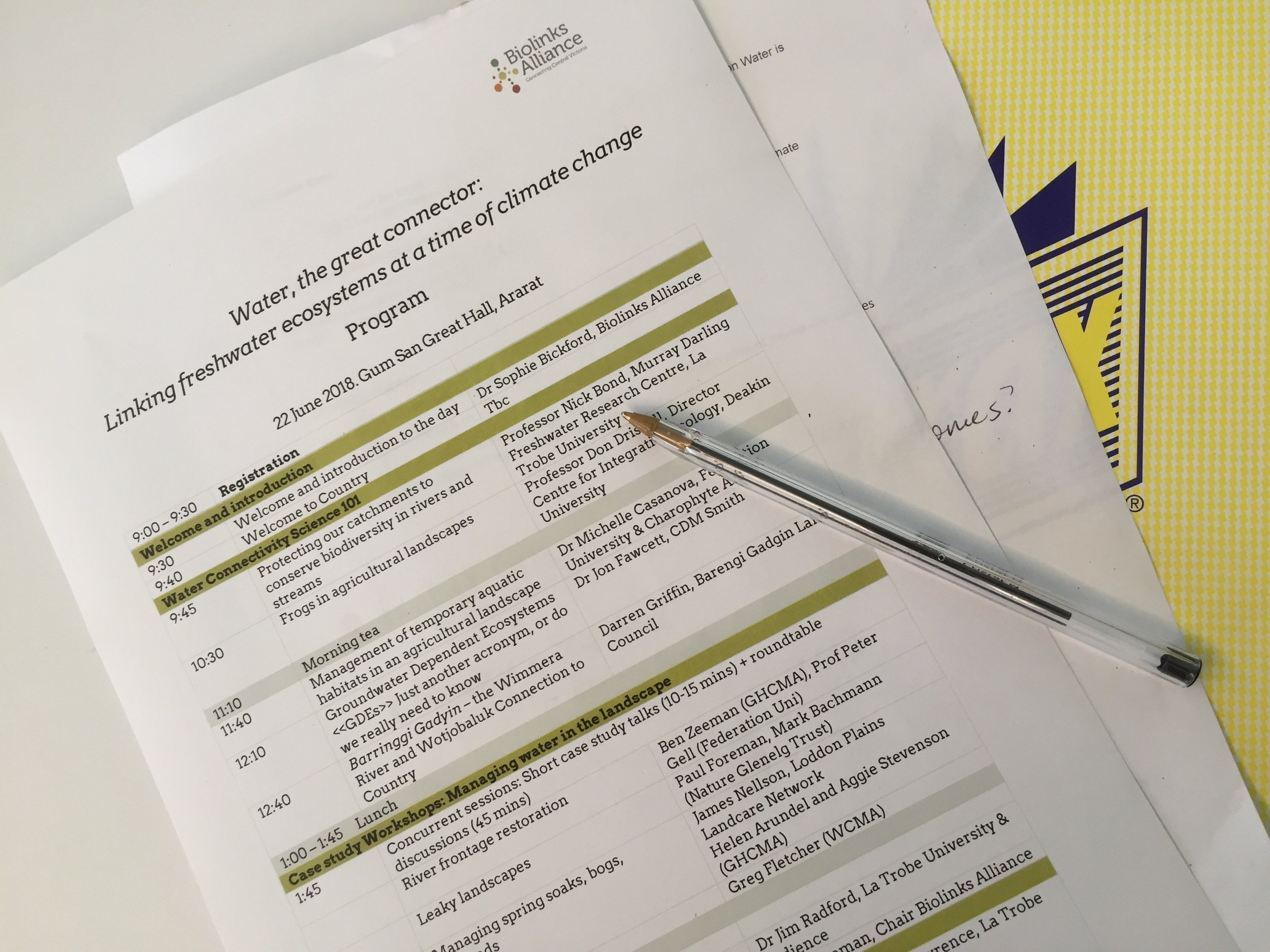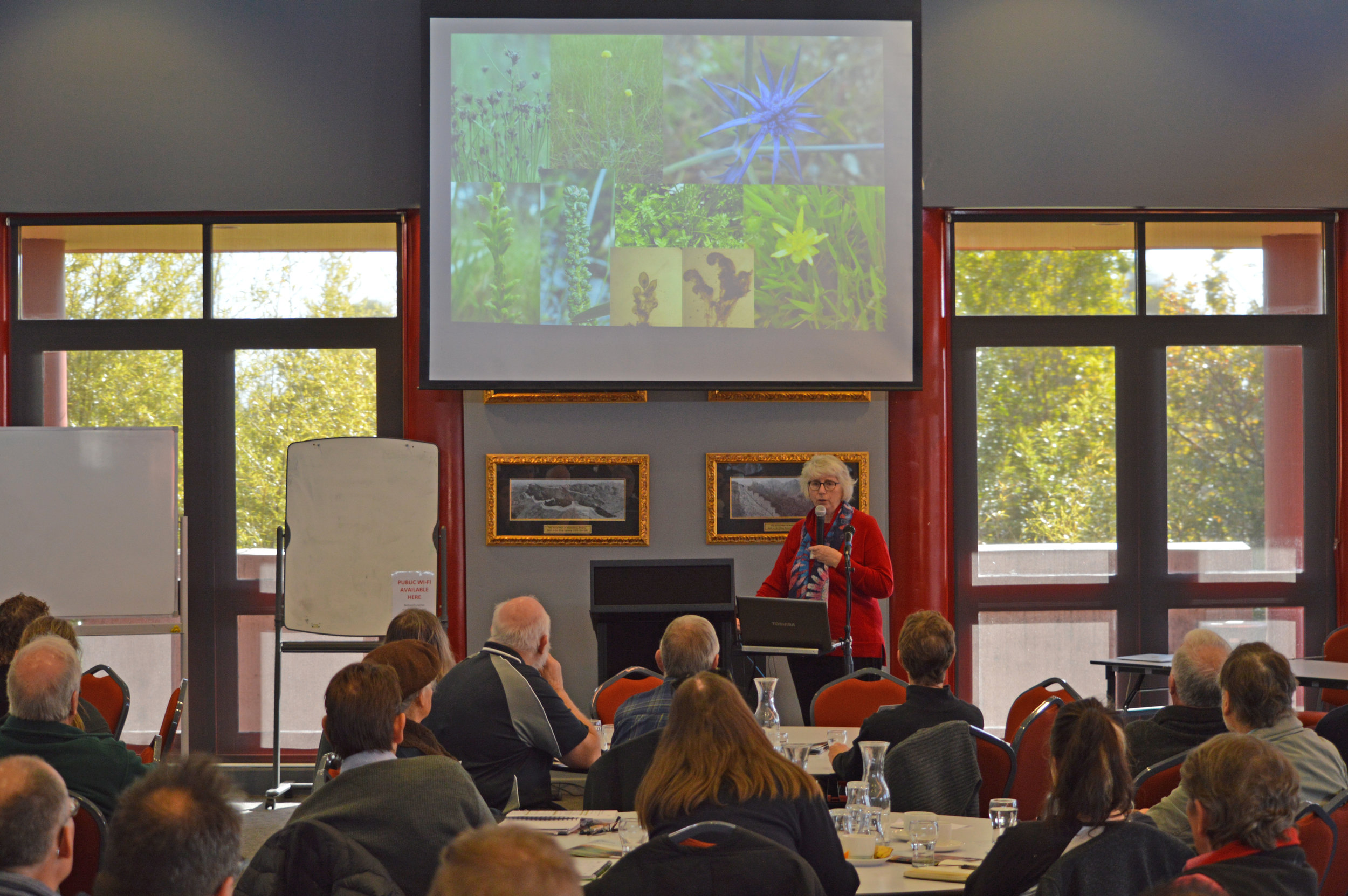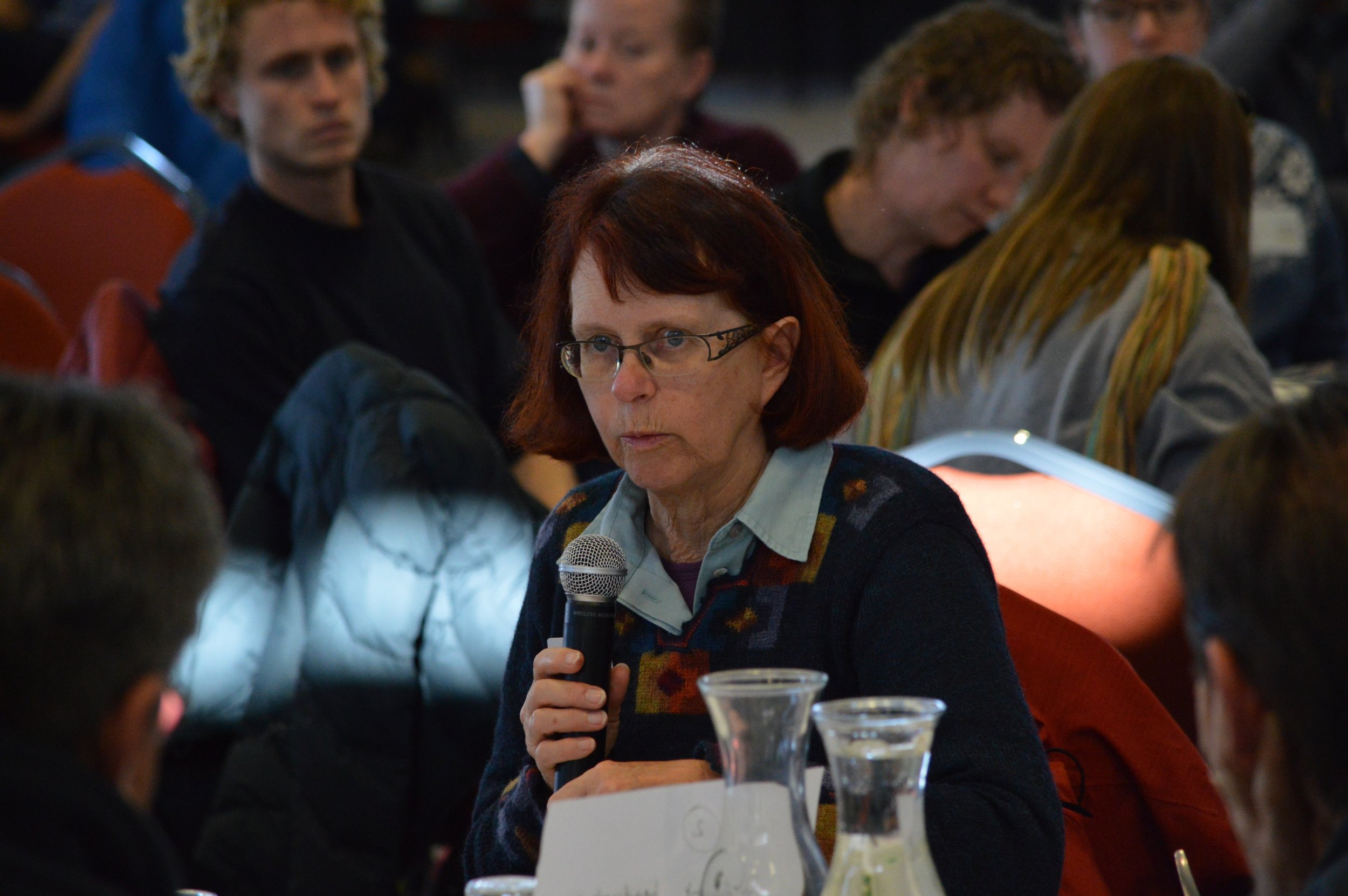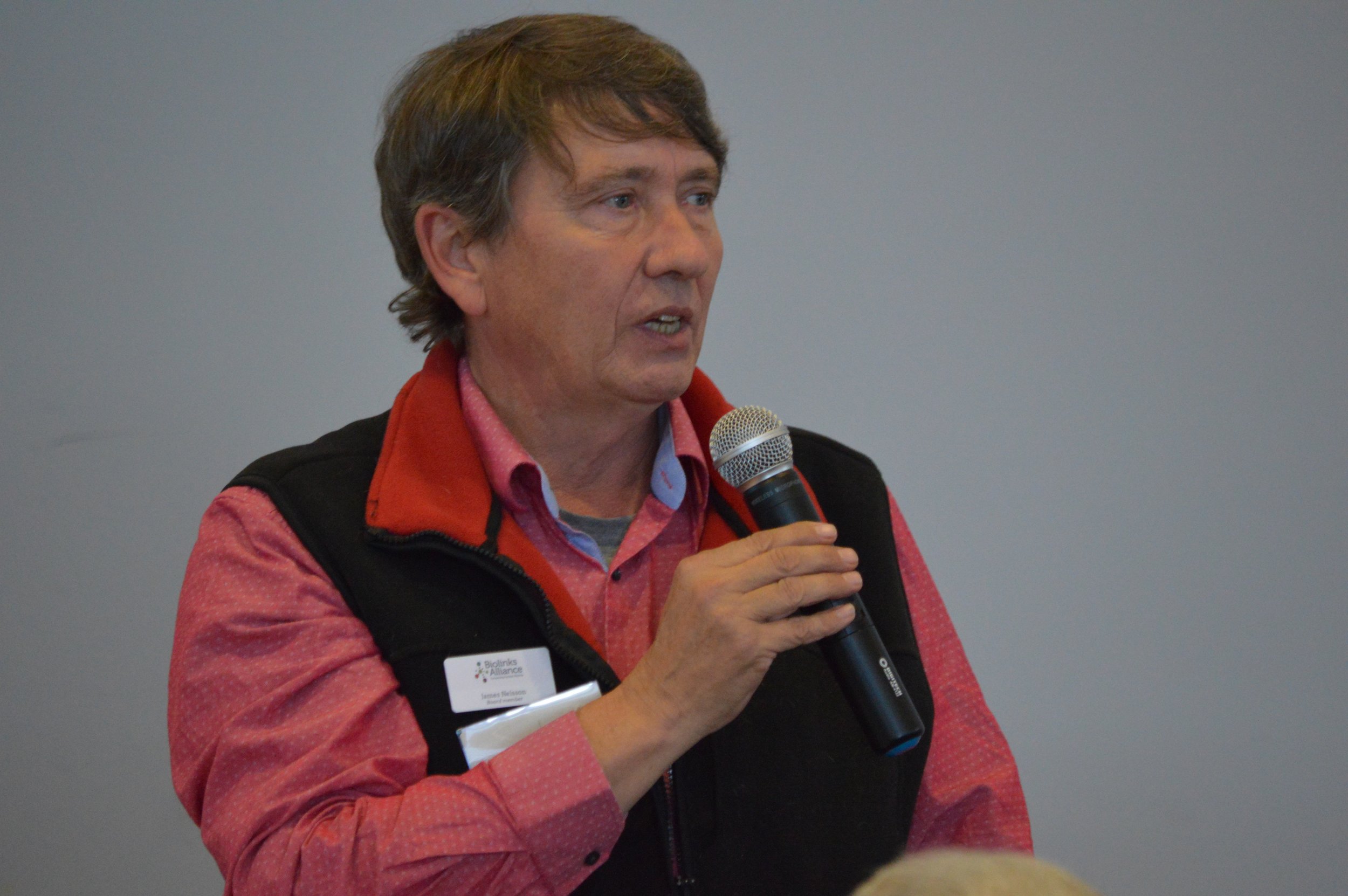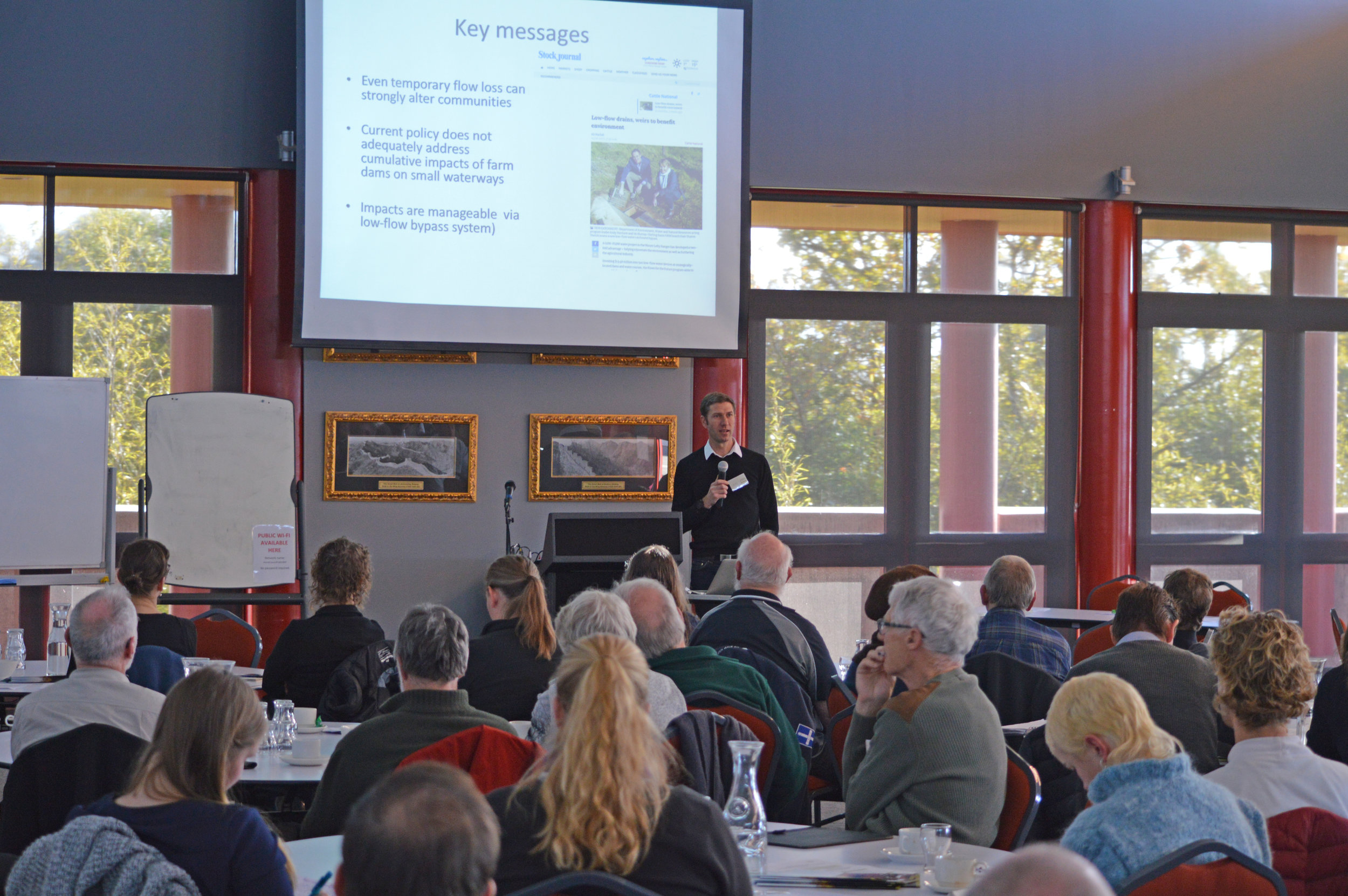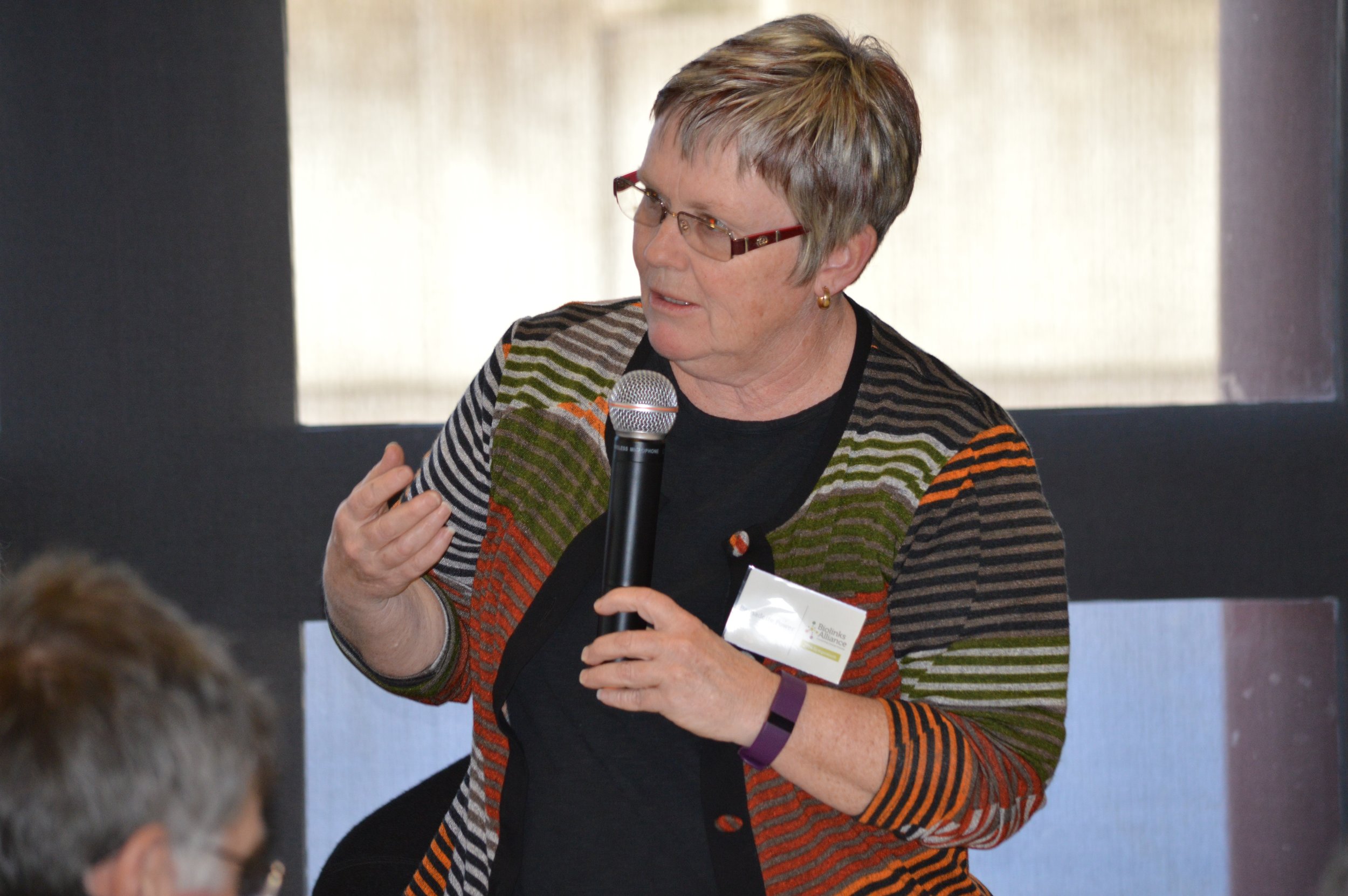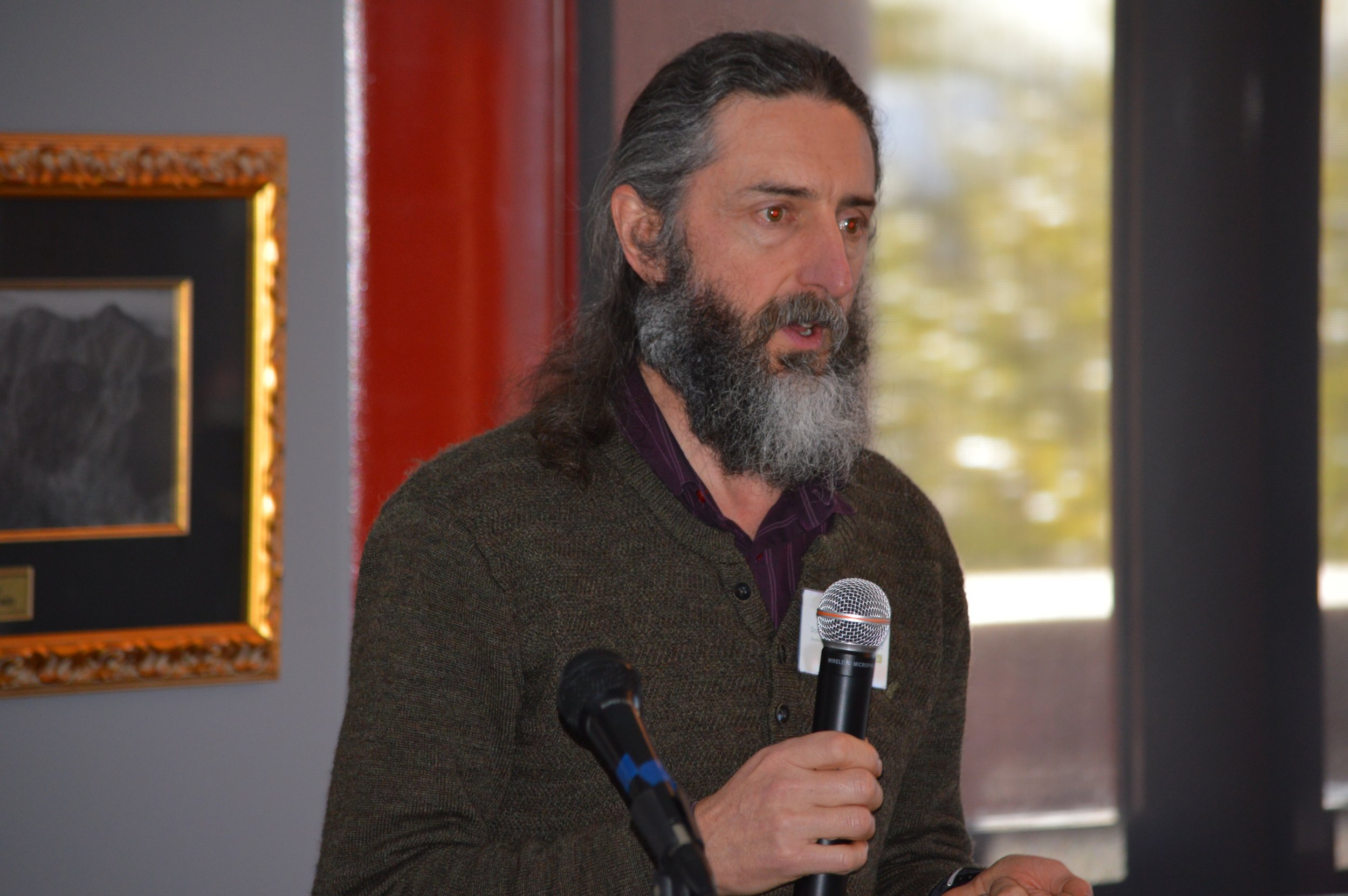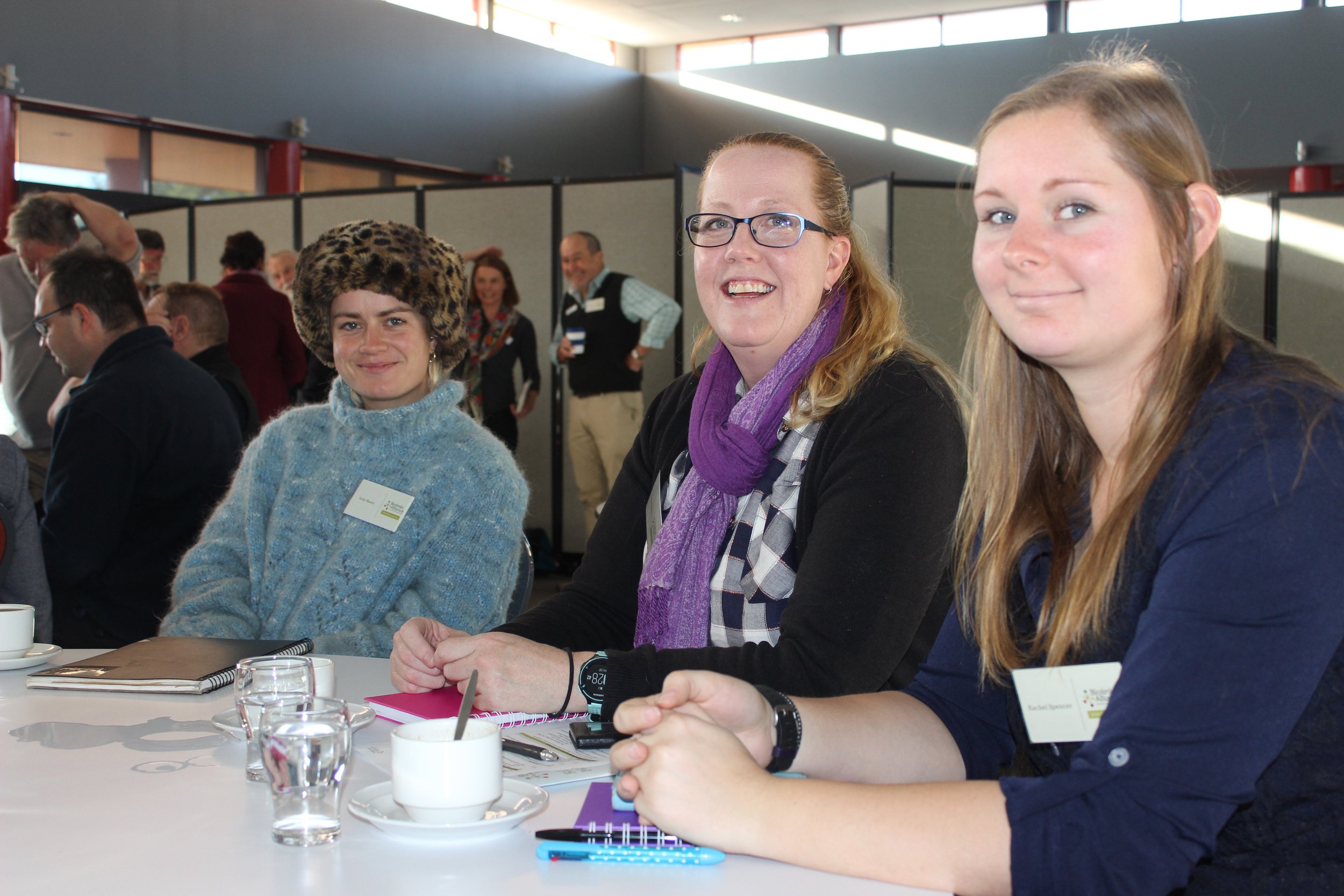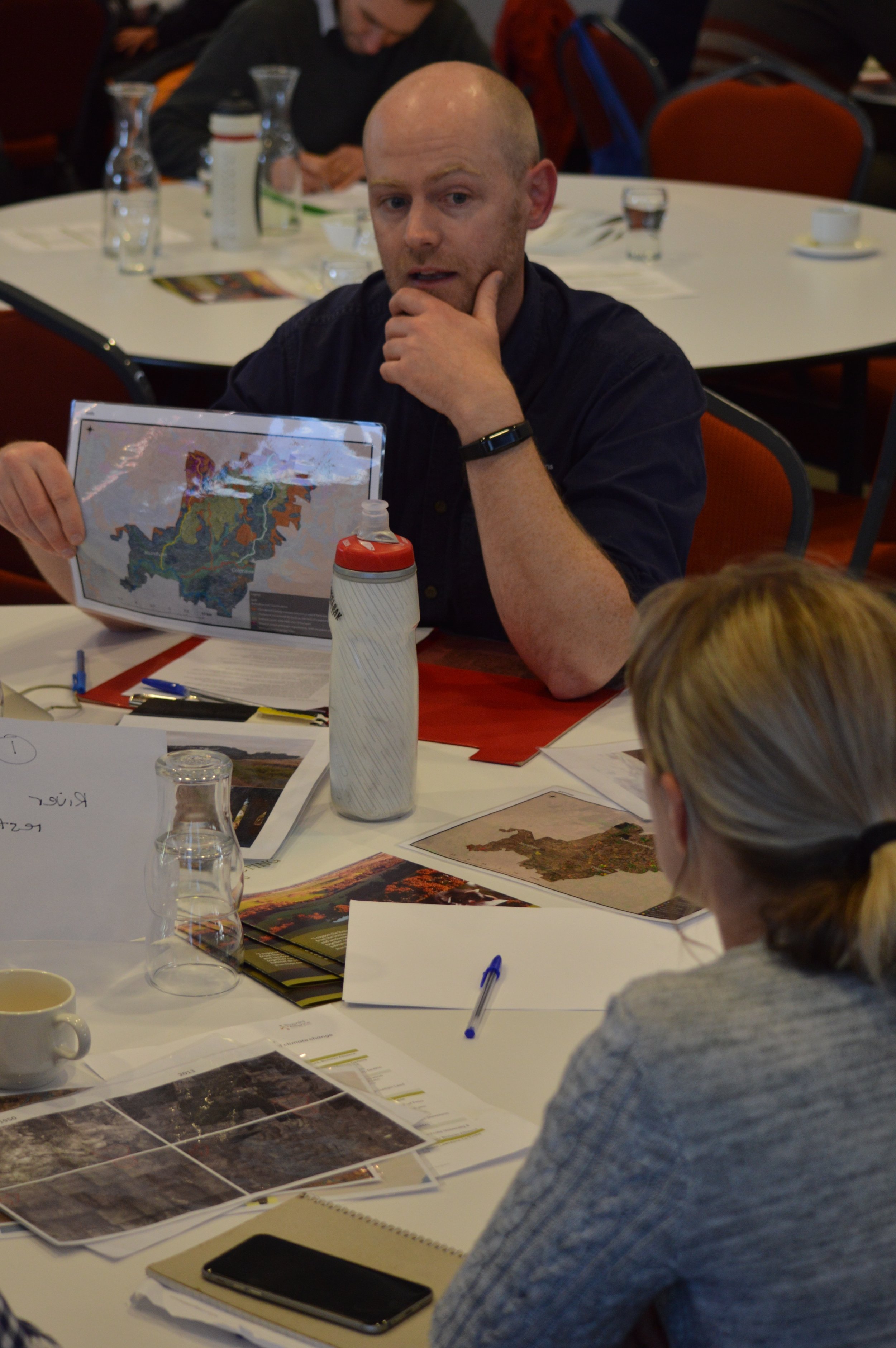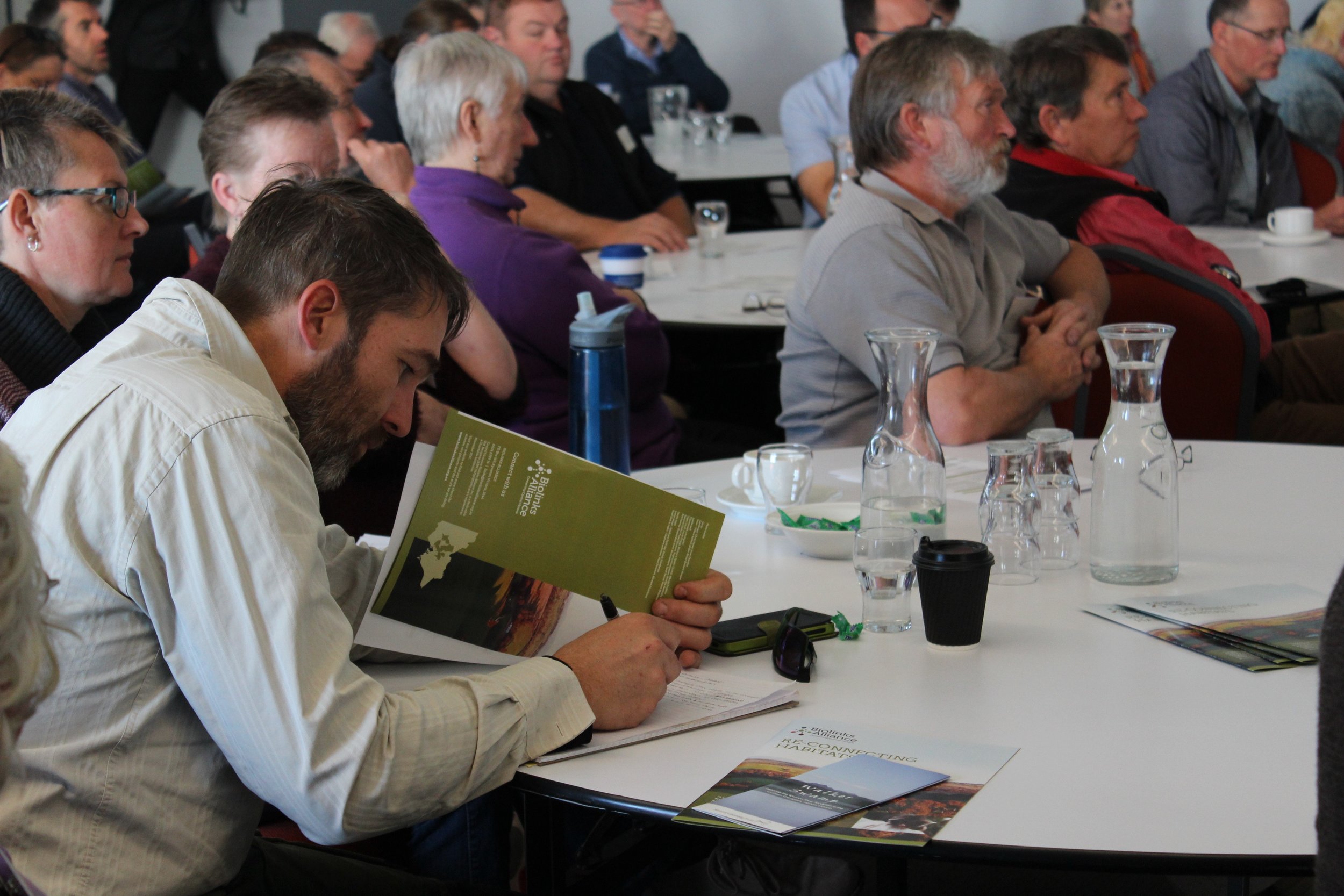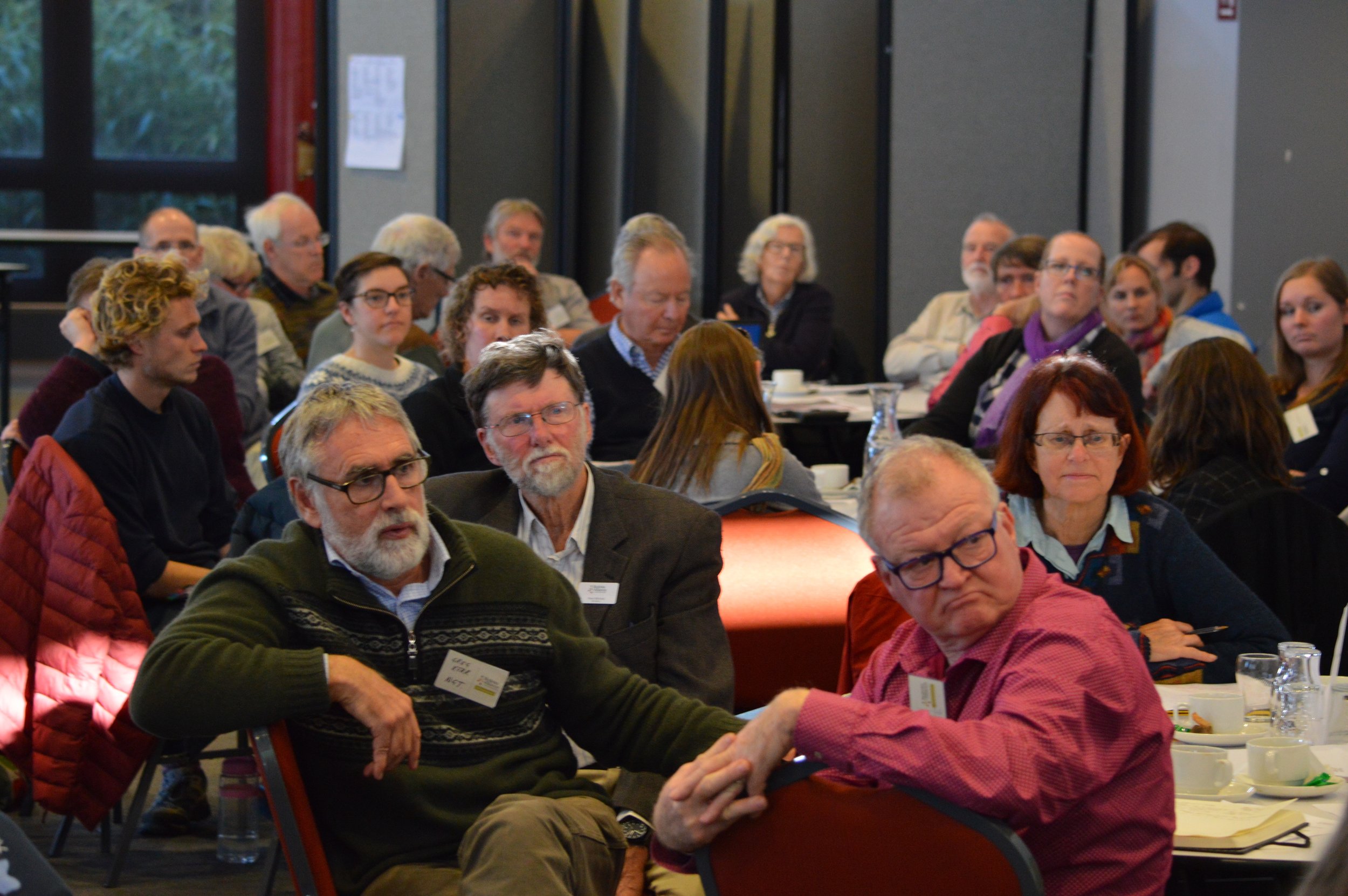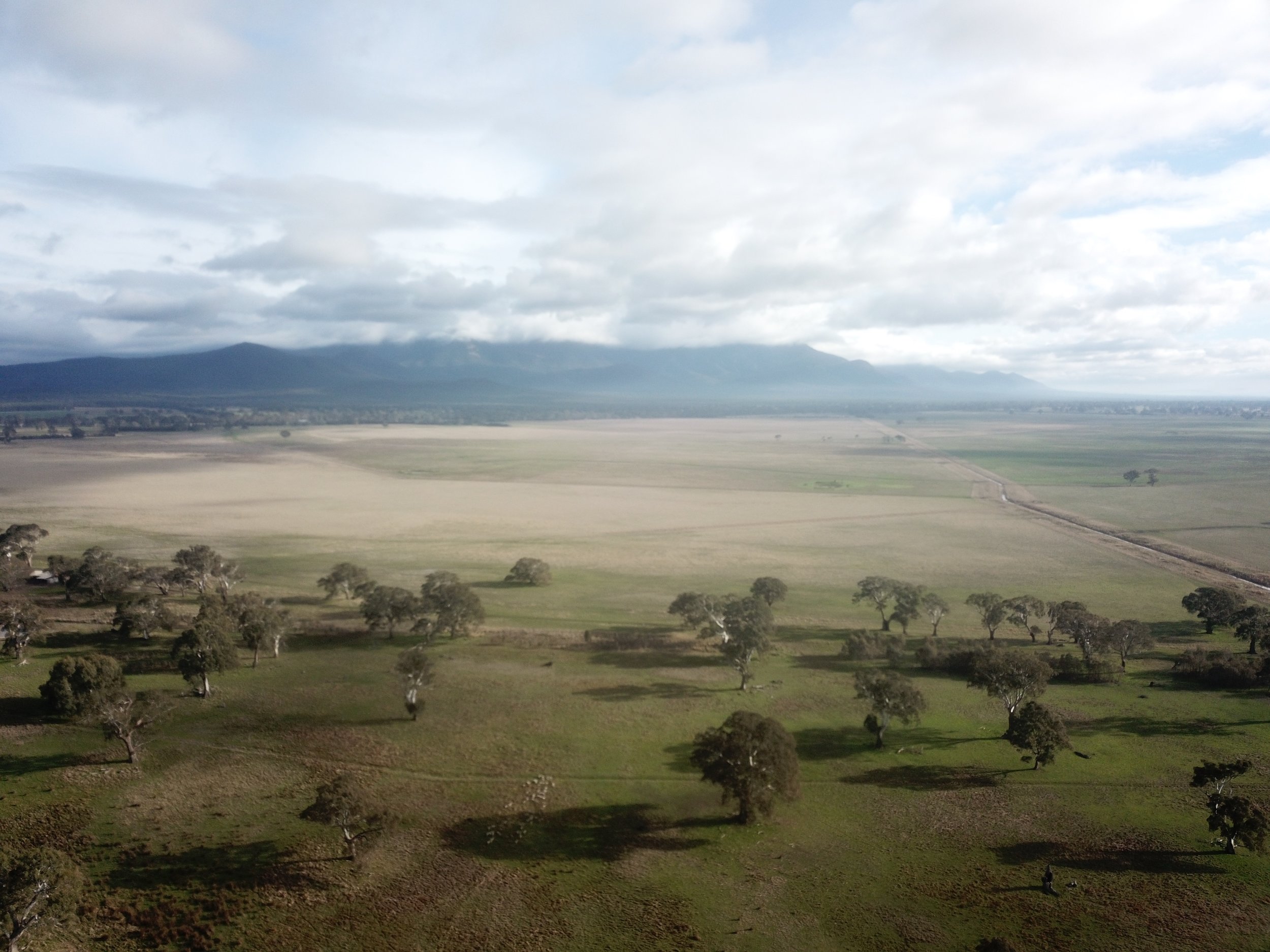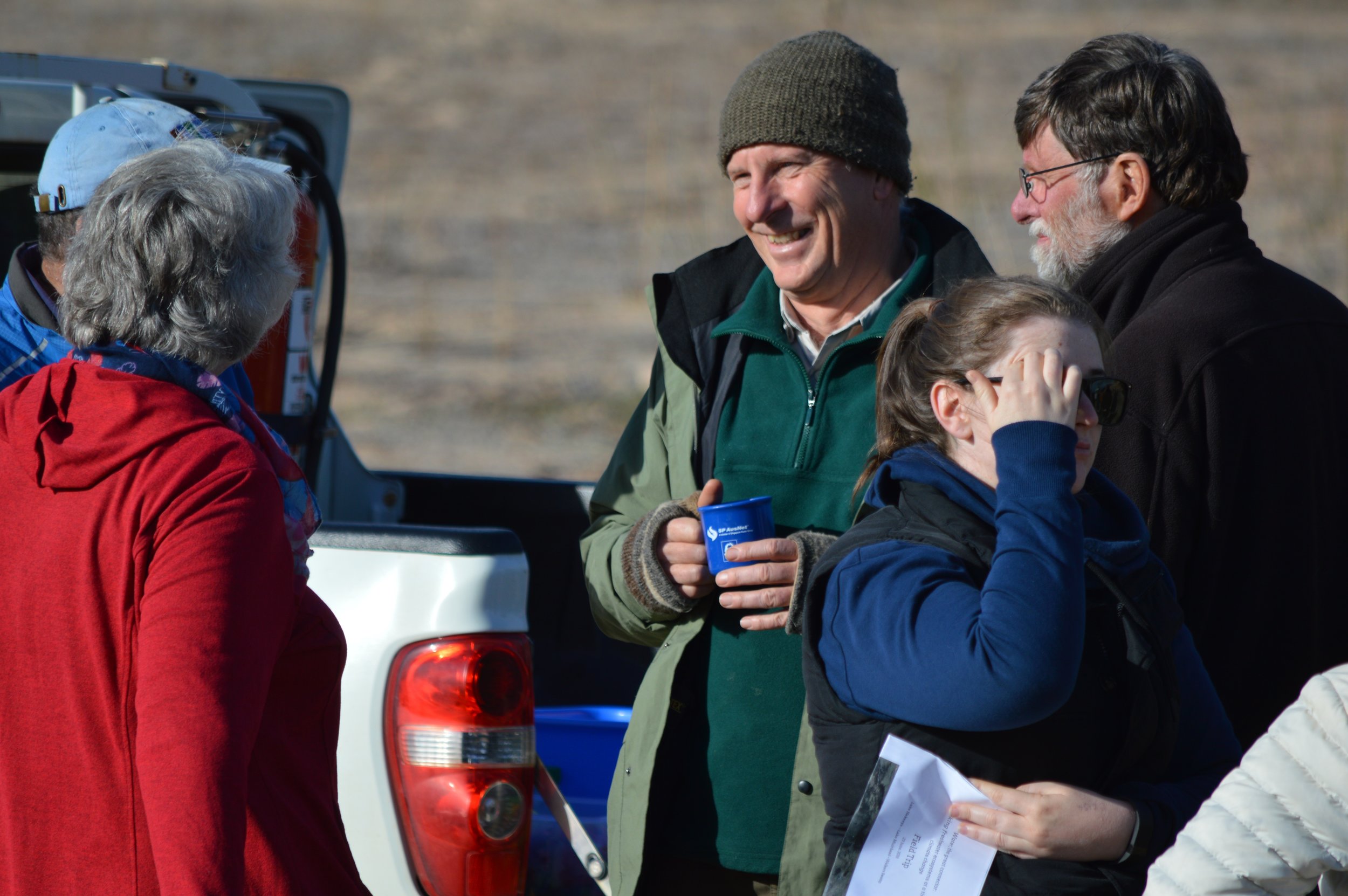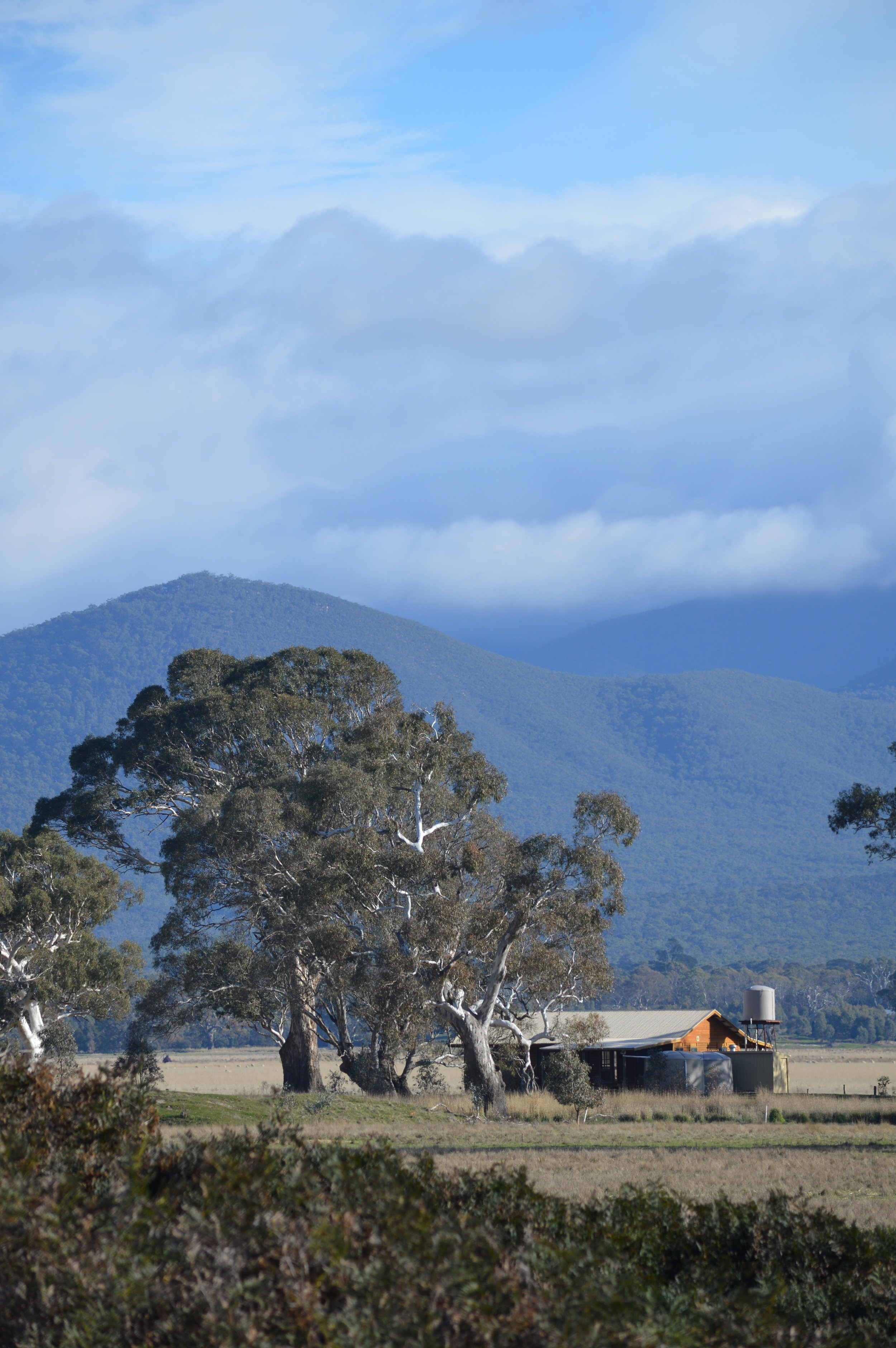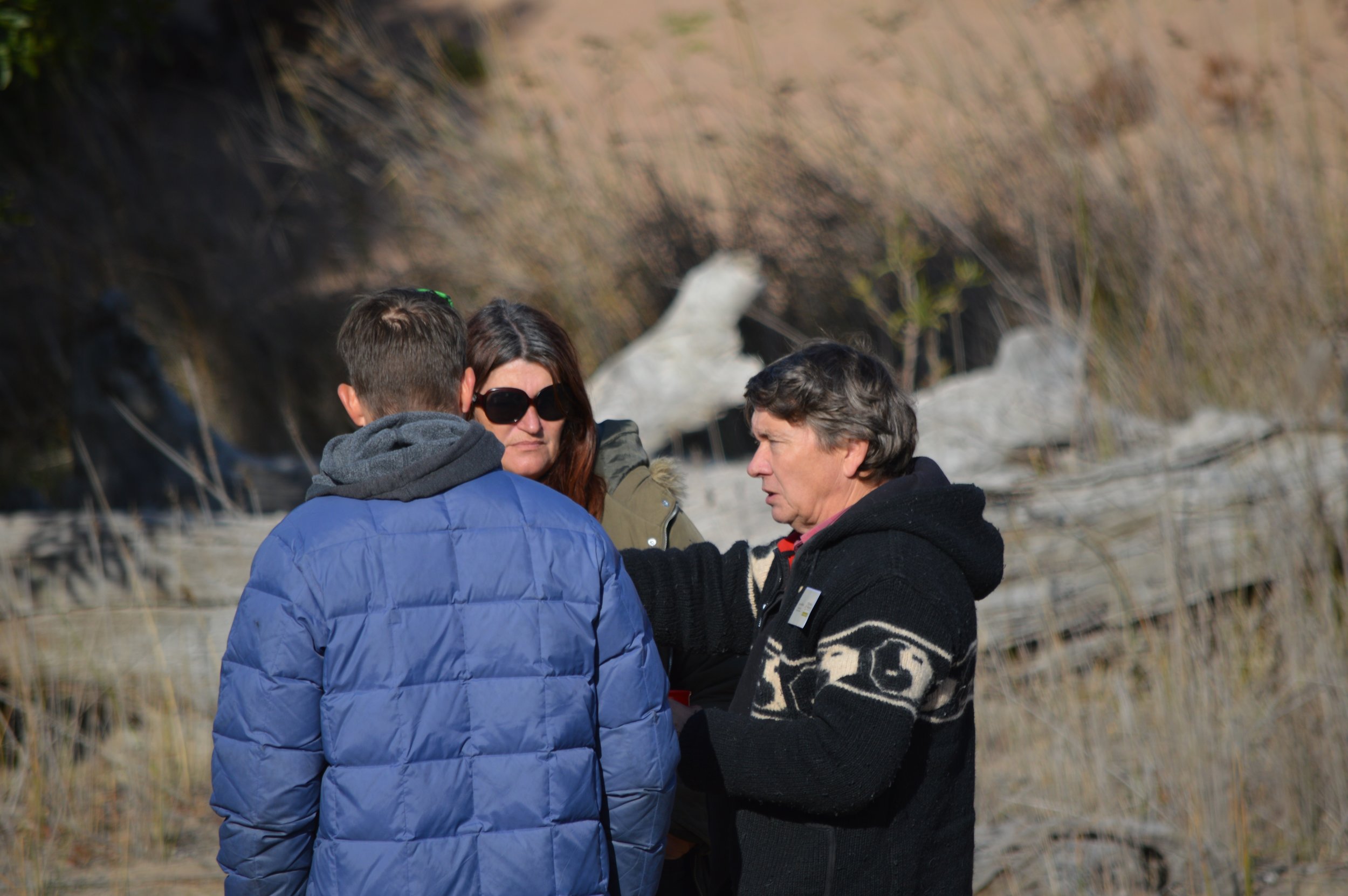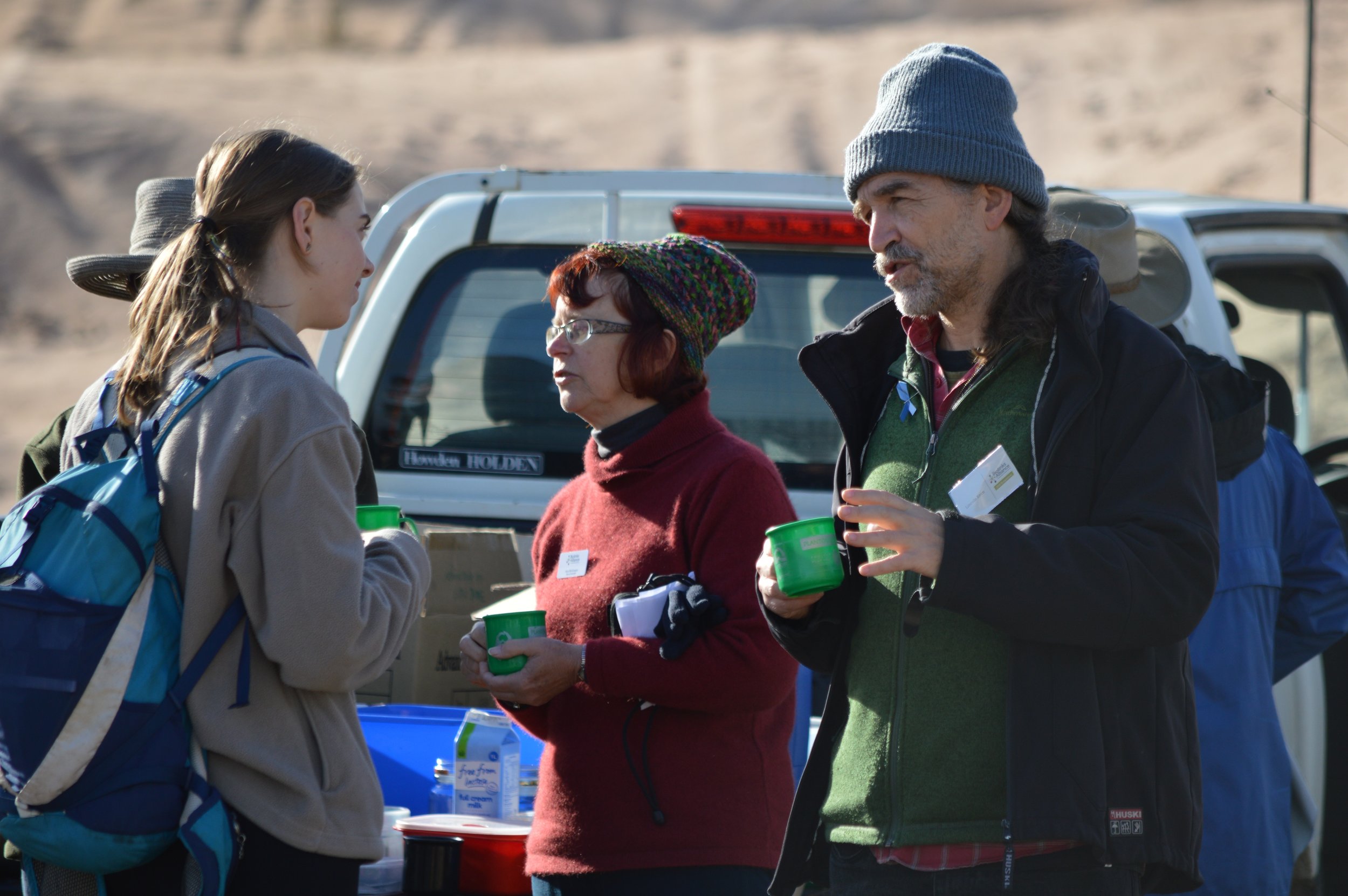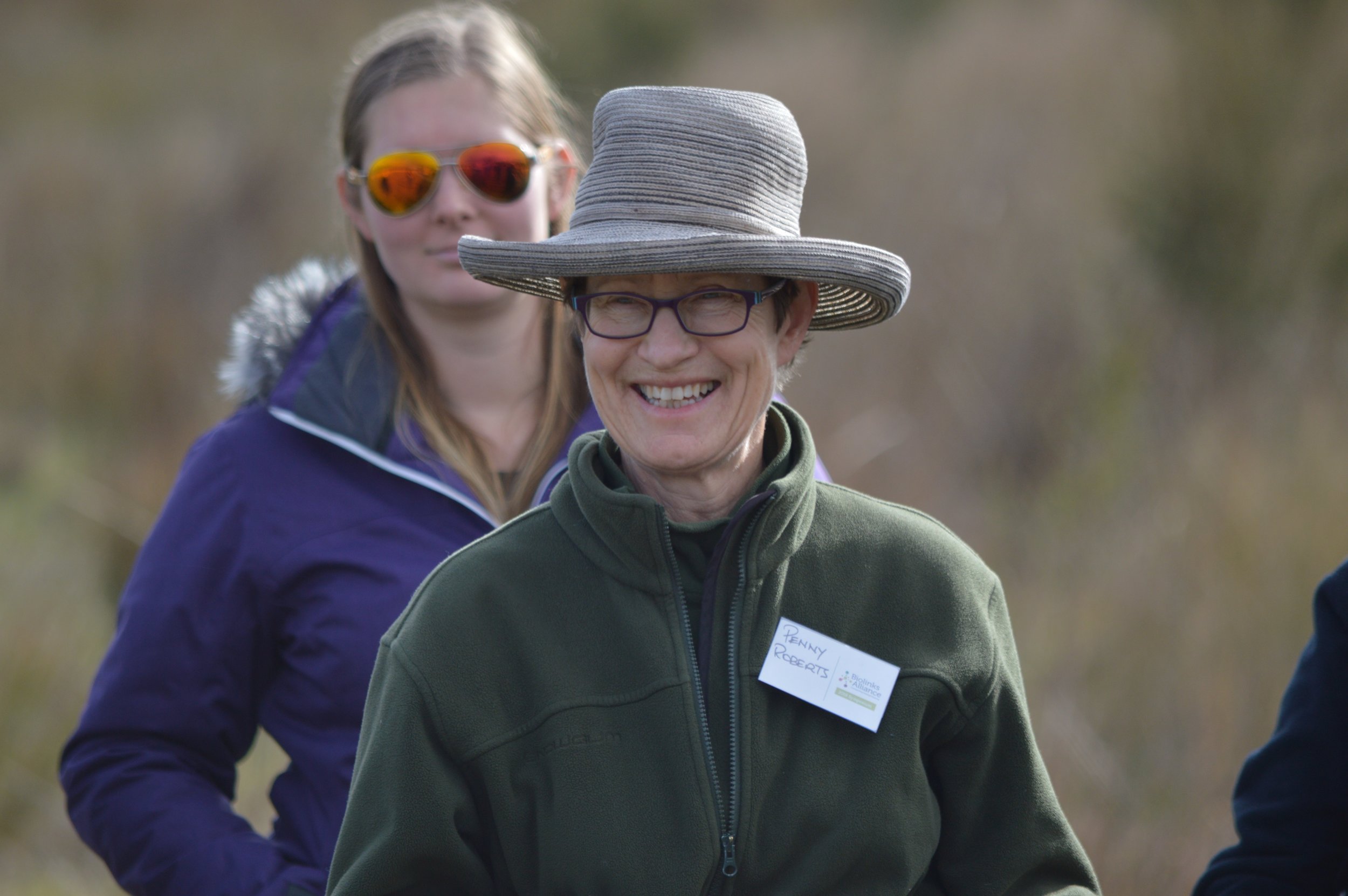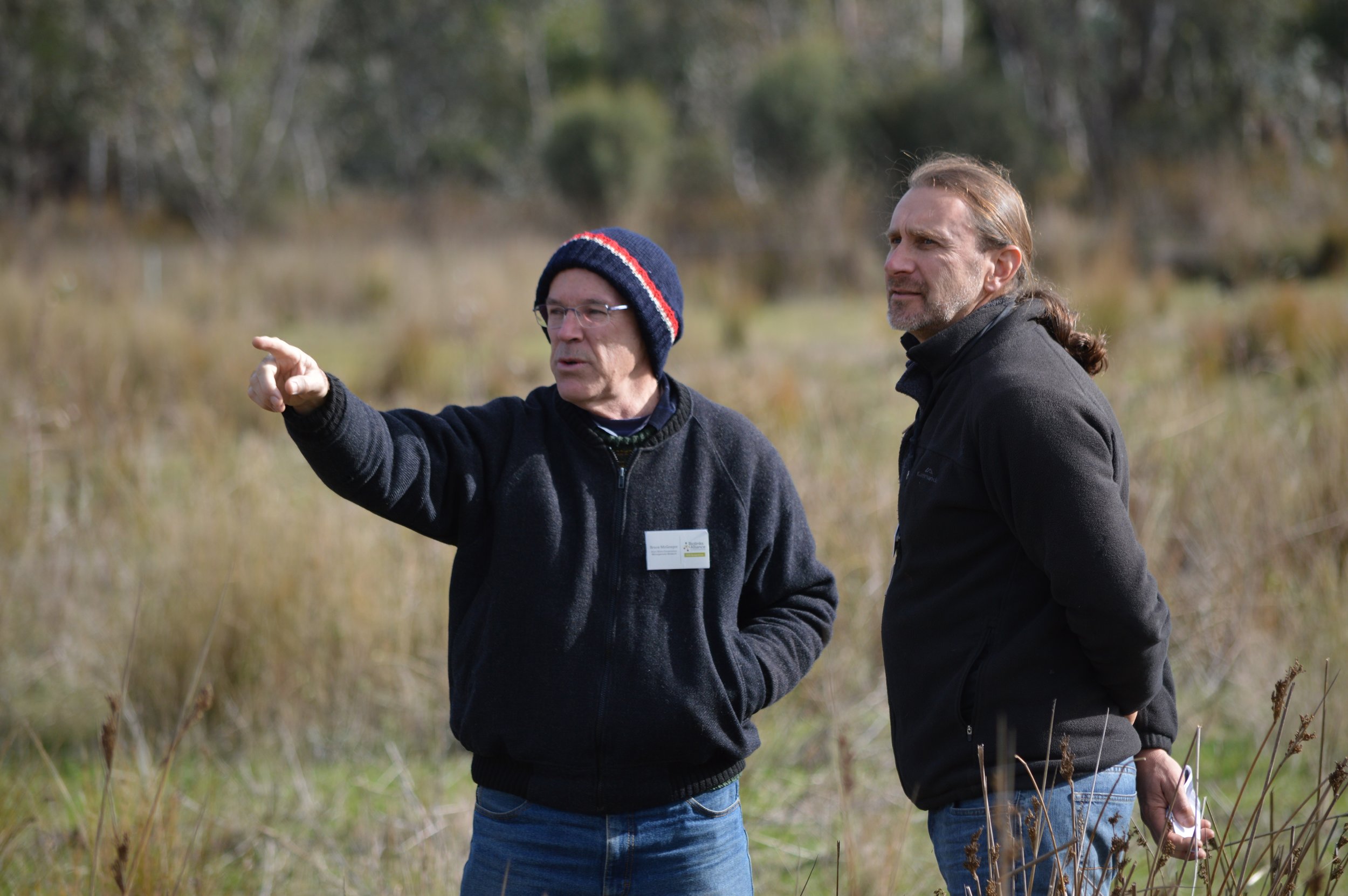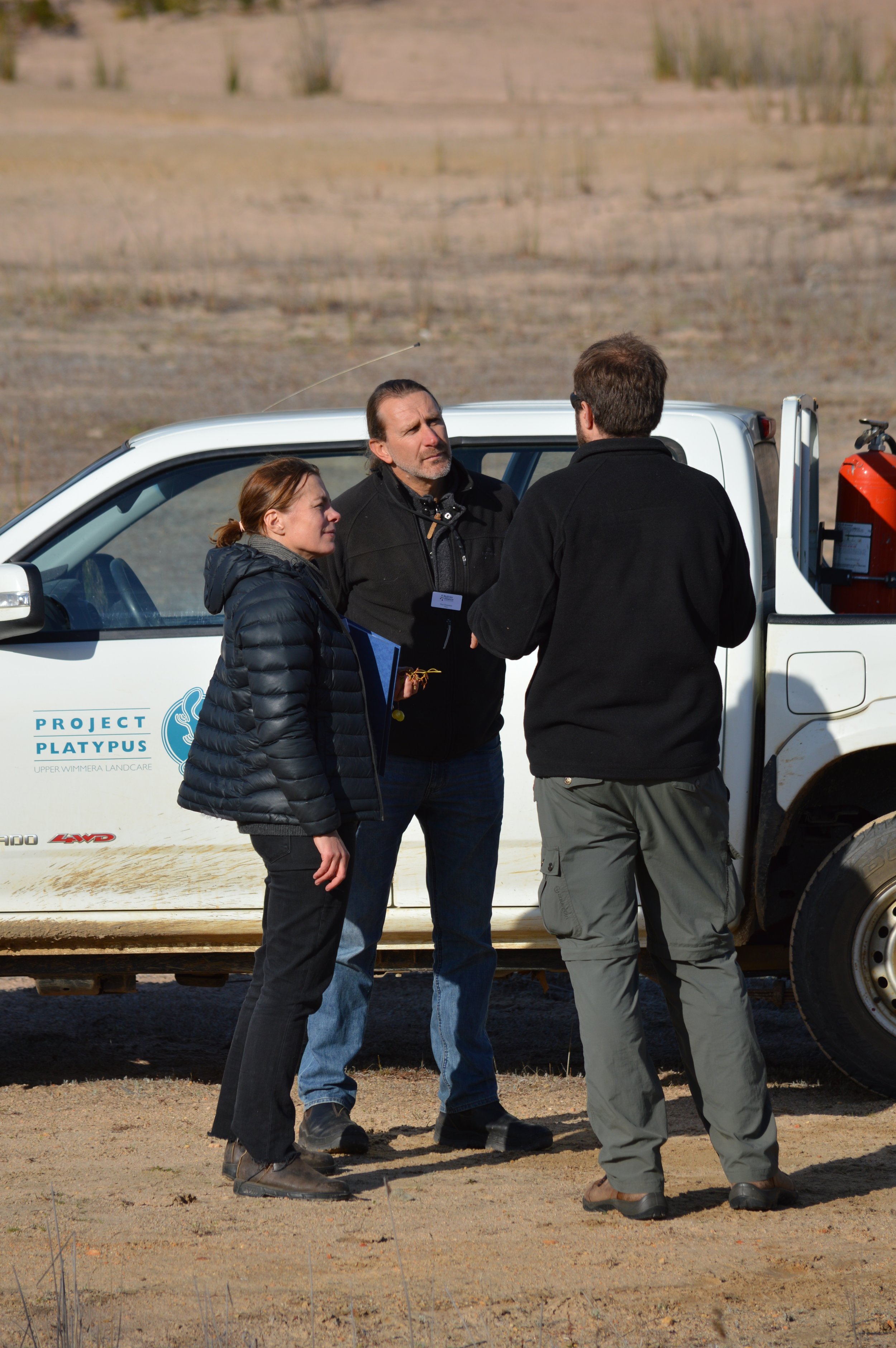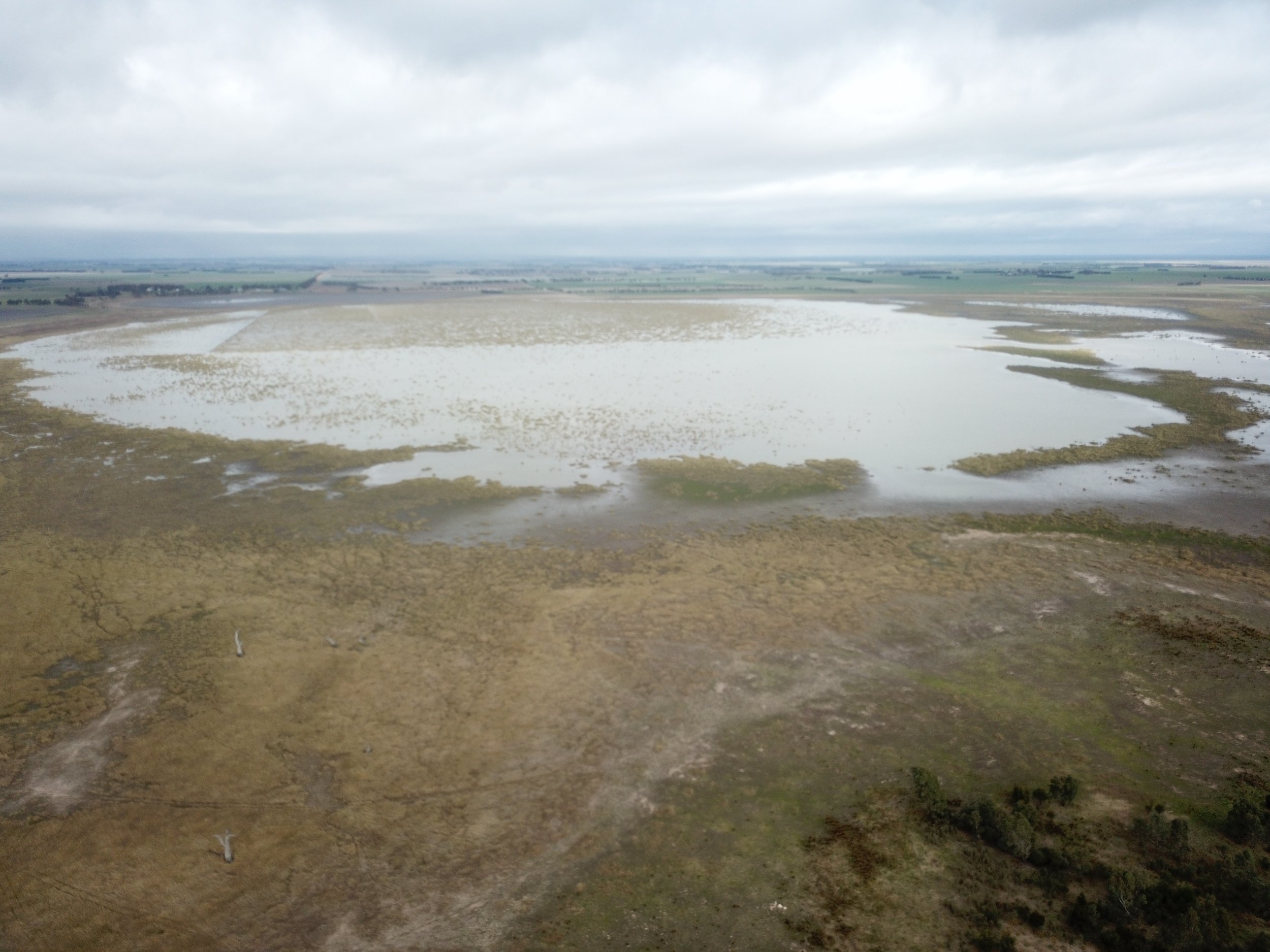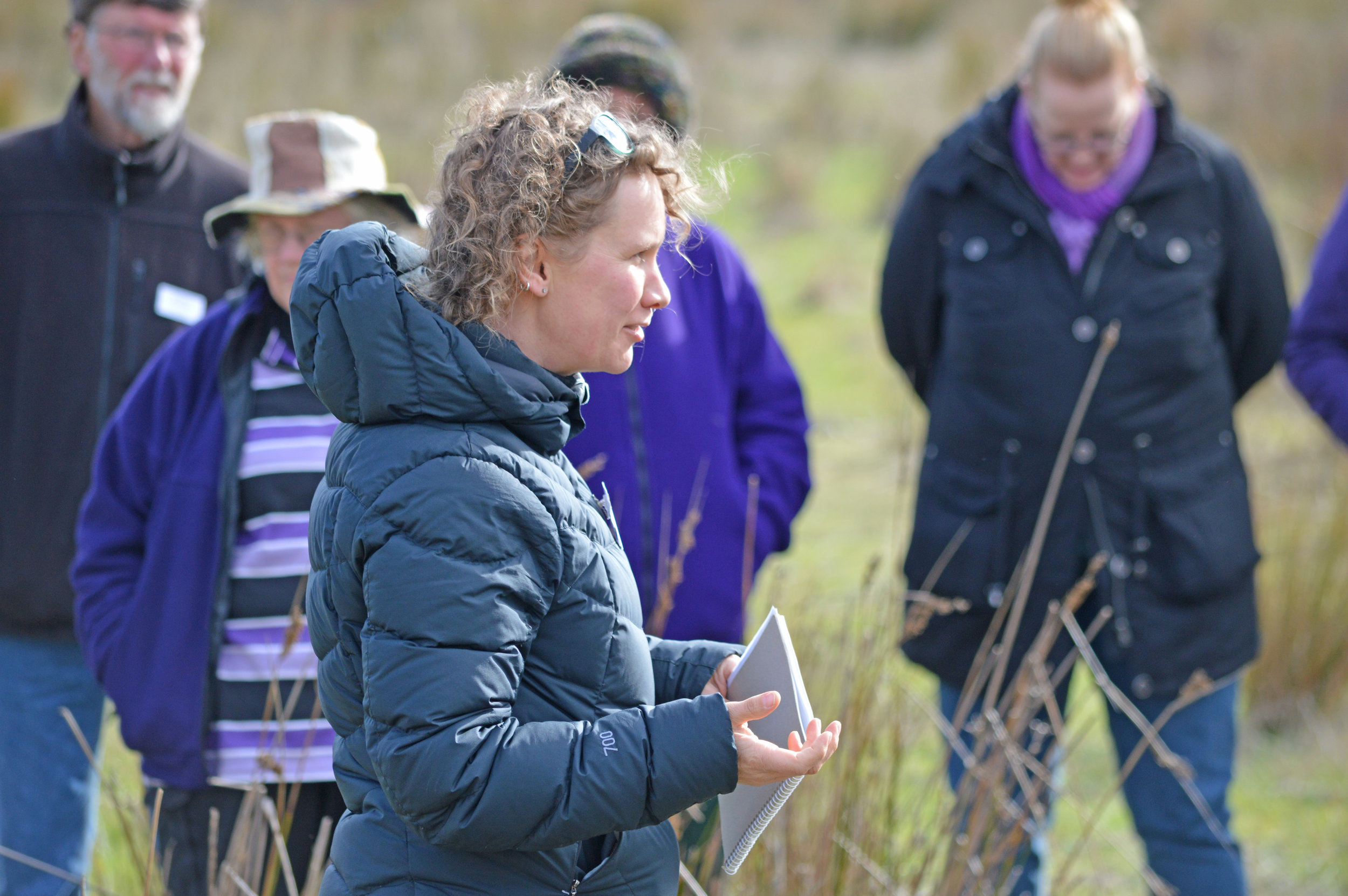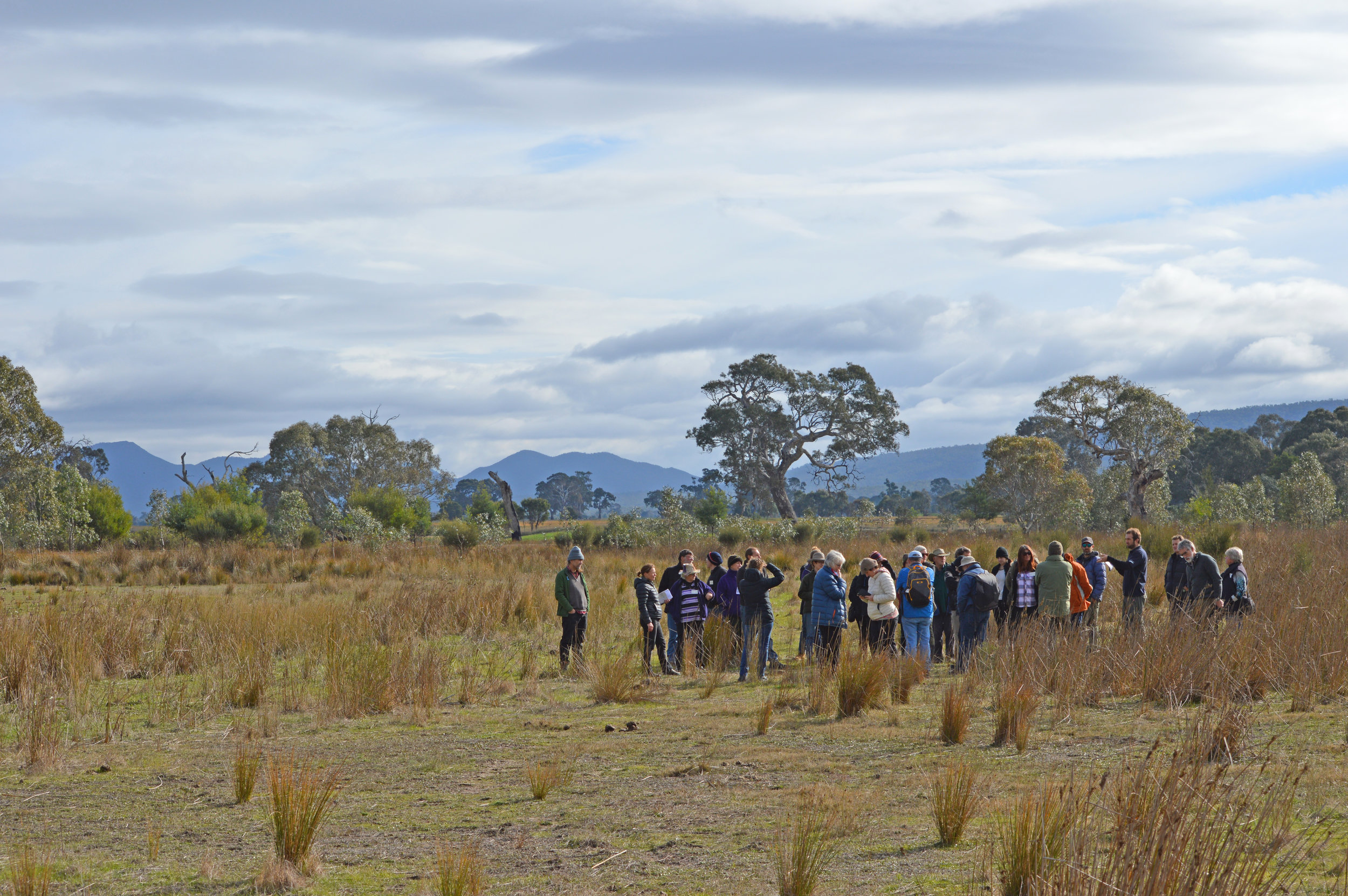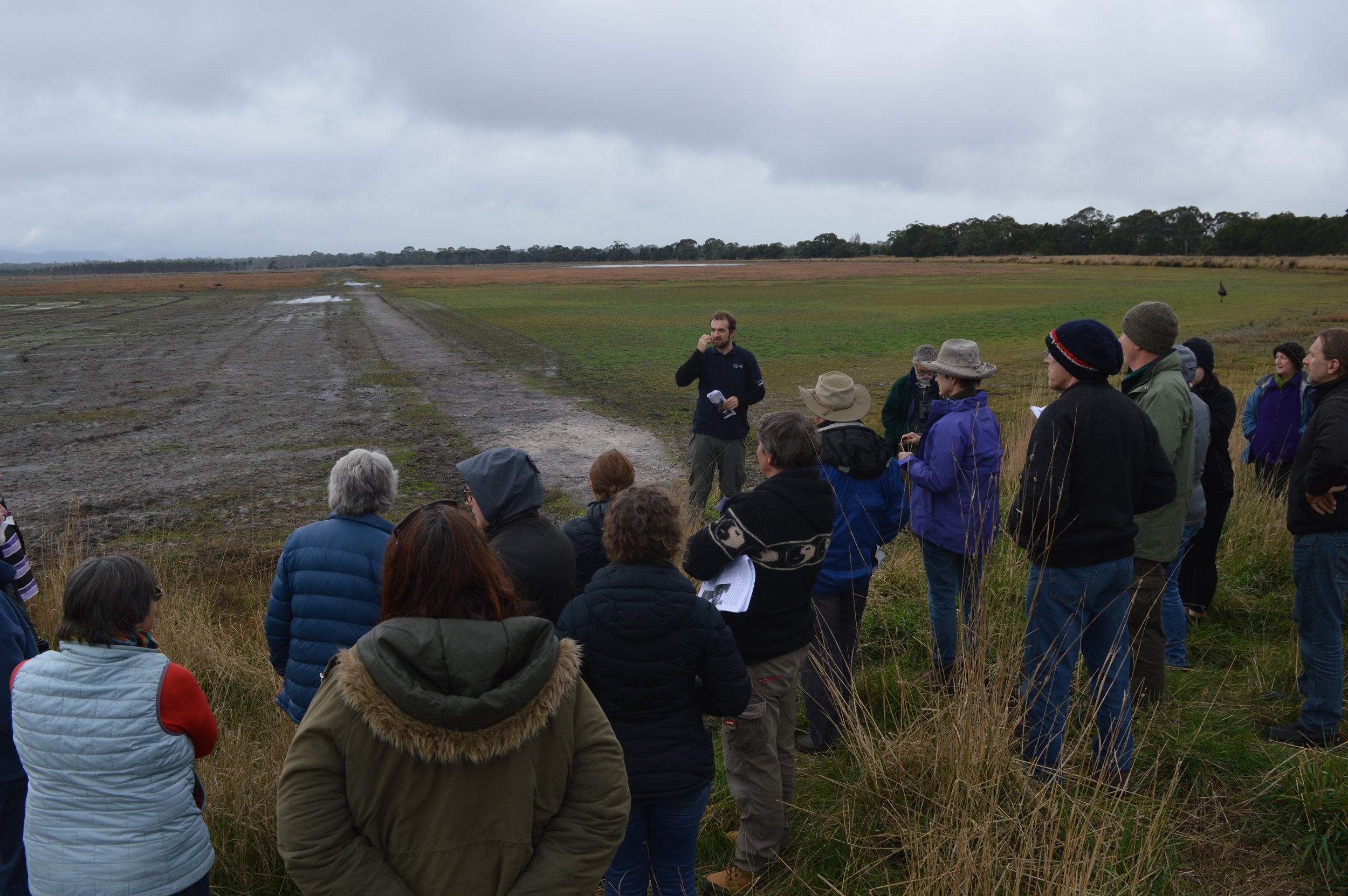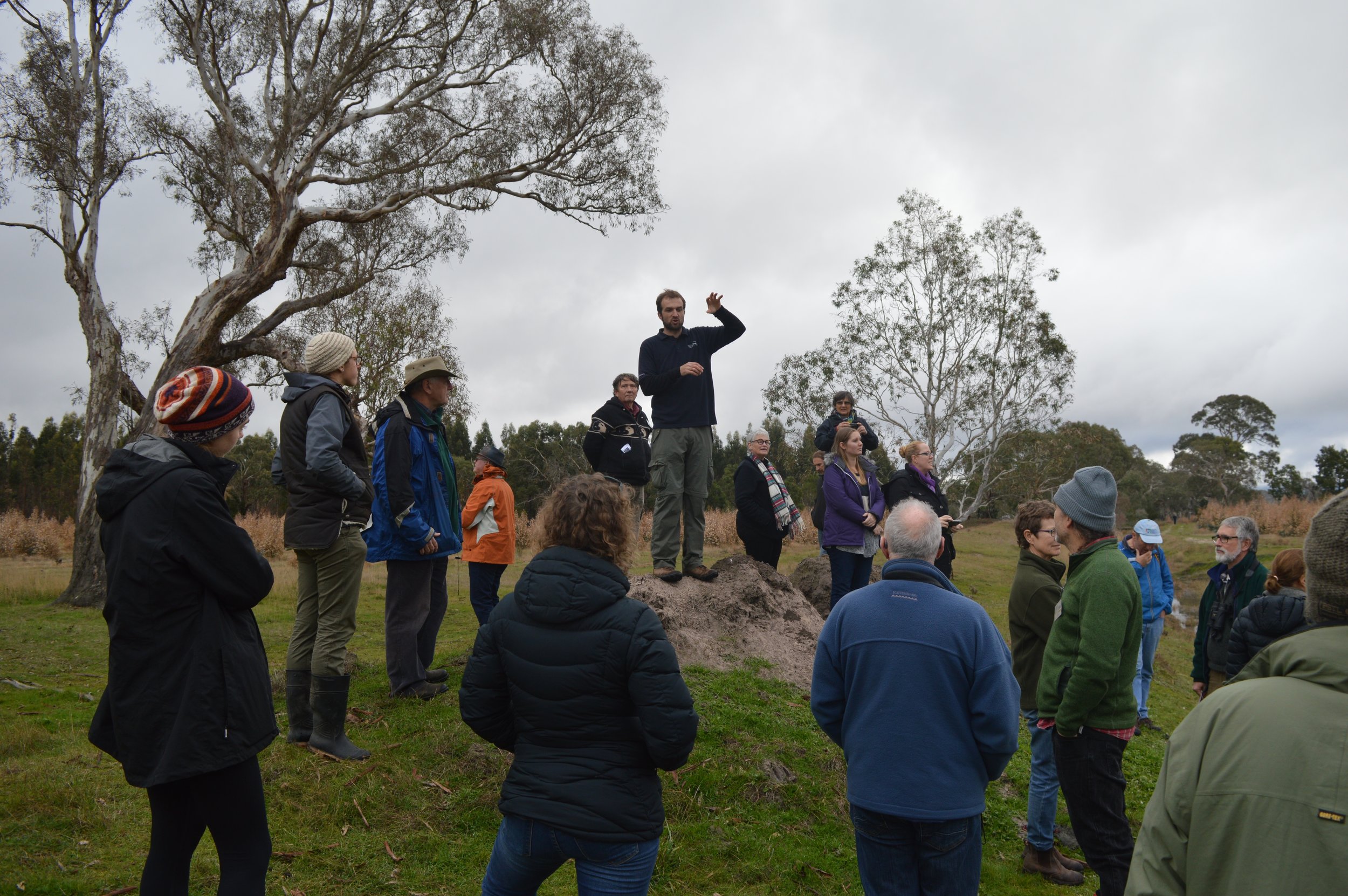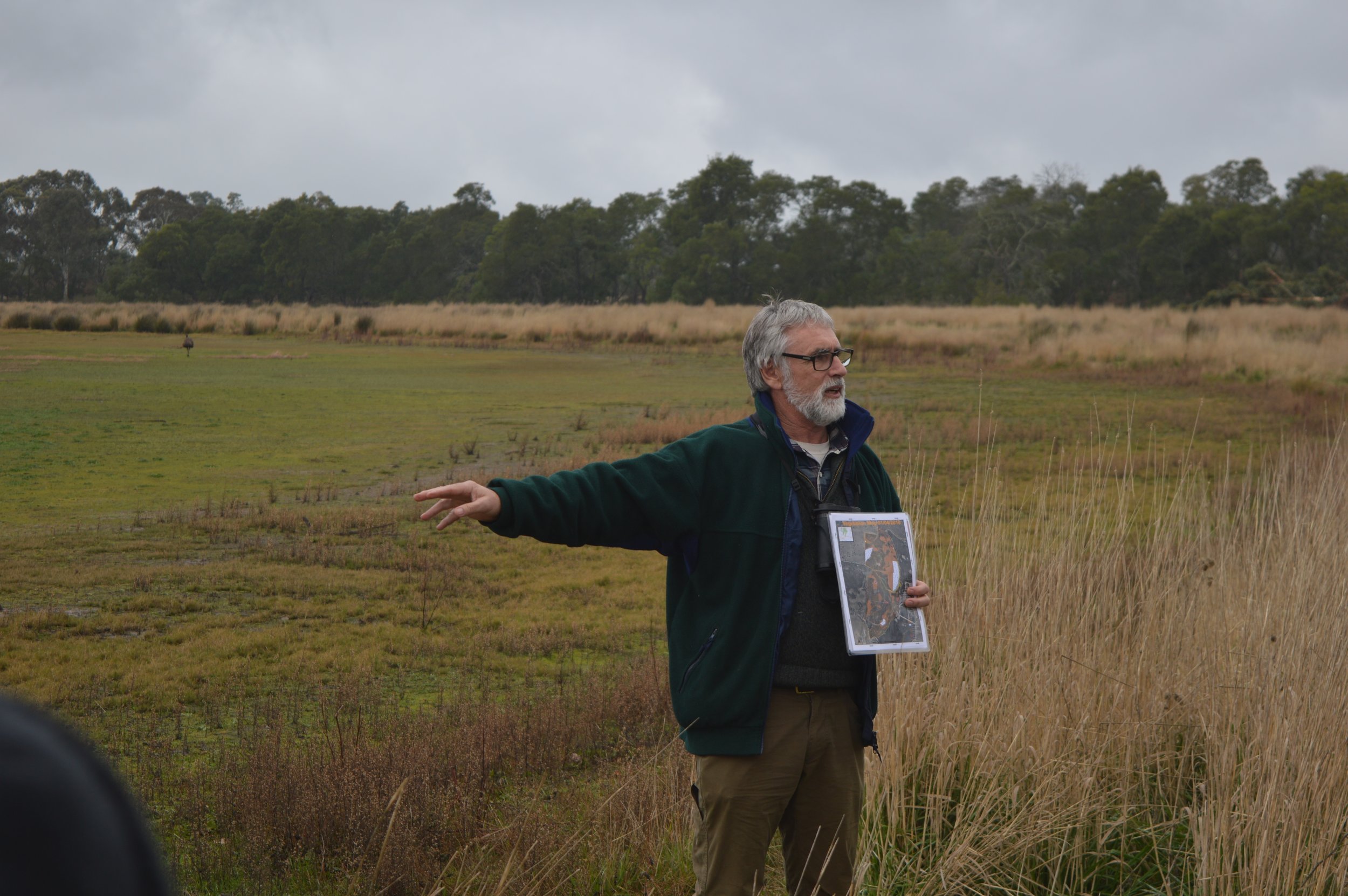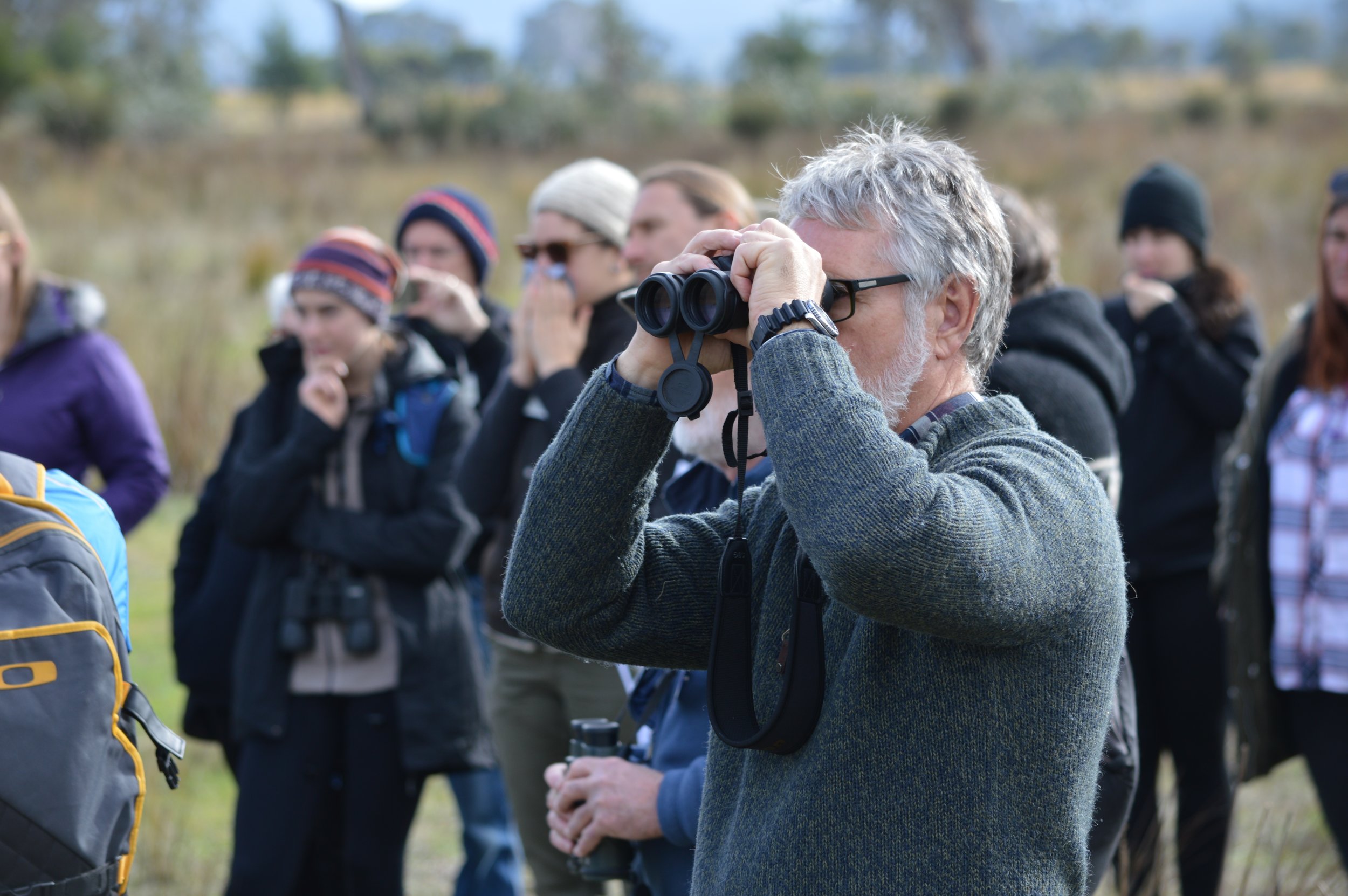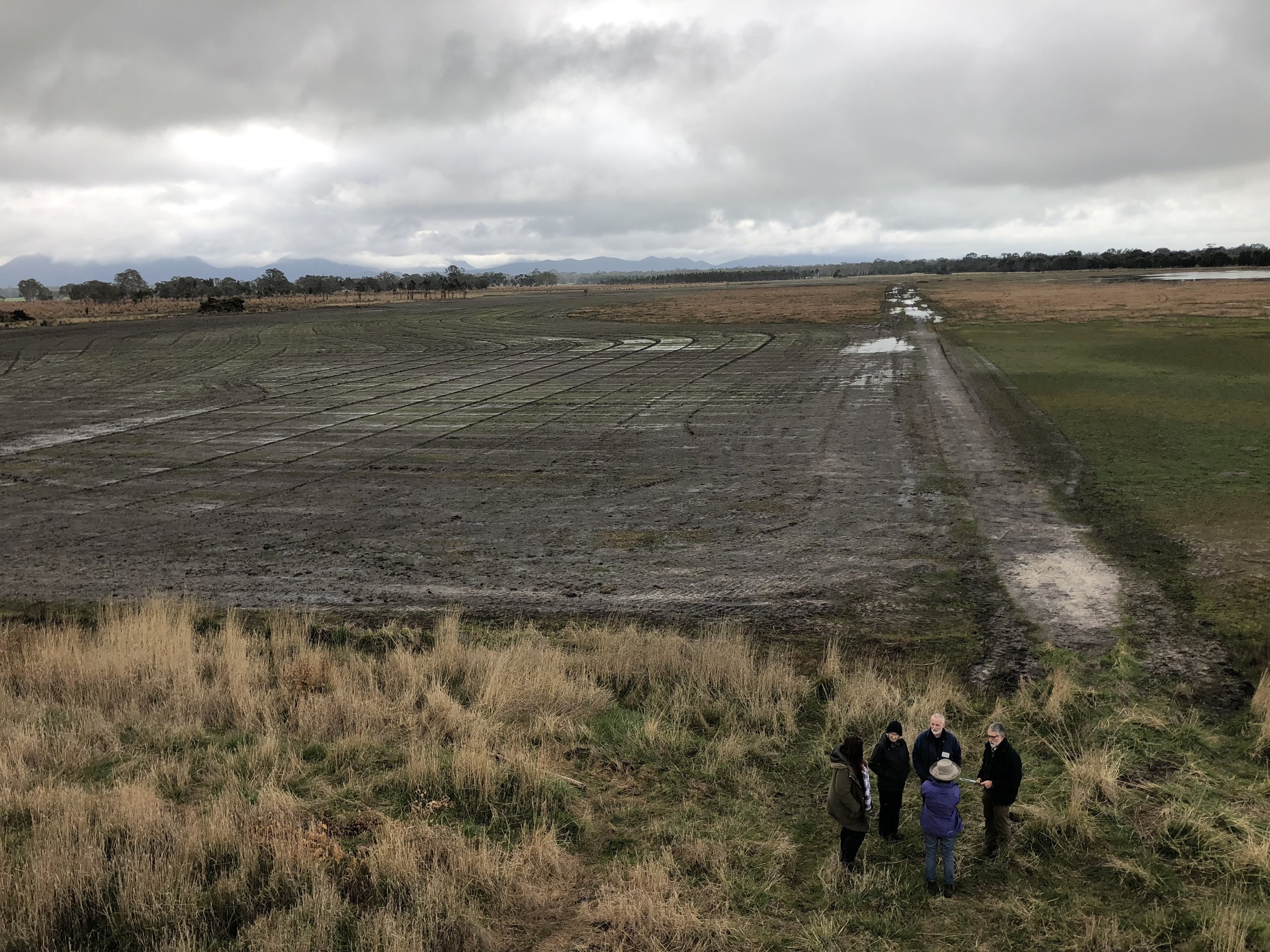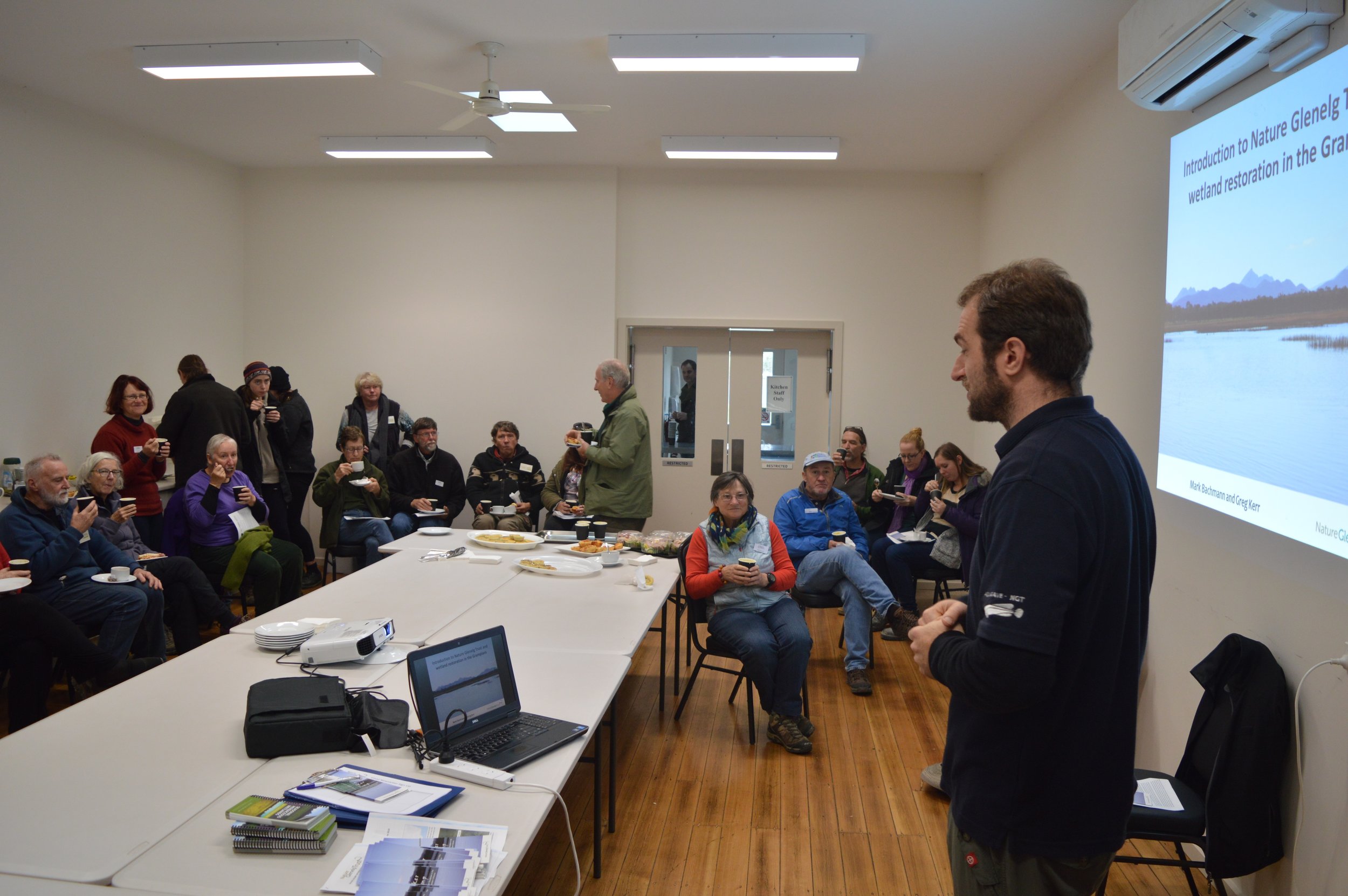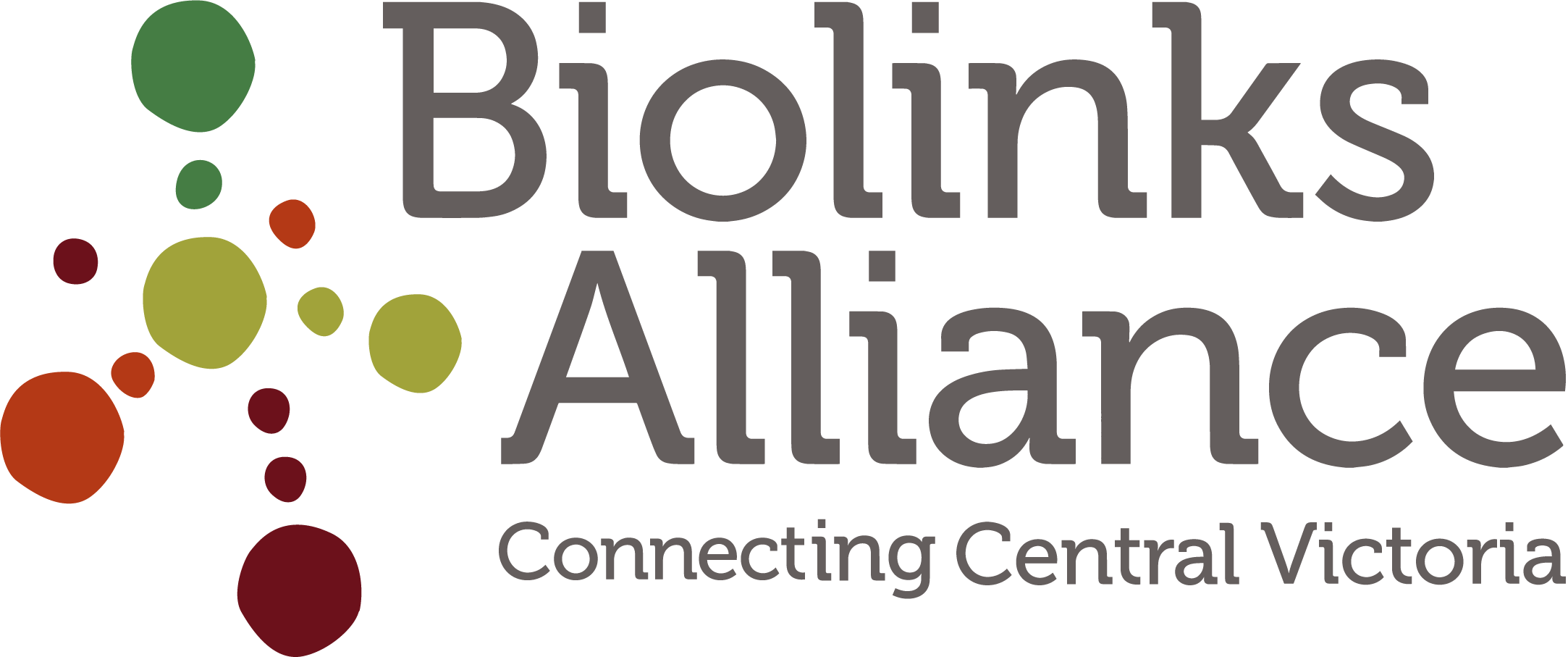Biolinks Alliance Knowledge Hub
Linking Waterscapes
2018 Water, the Great Connector Symposium Proceedings
Just as our terrestrial species require connected habitats - so do frogs, invertebrates, fish and other aquatic species. Water is the great connector - providing passage and connecting environments.
The 2018 Biolinks Alliance Annual Symposium explored the pivotal role that water plays as a connector and the waterscapes and aquatic species that rely on it.
With a strong focus on central Victorian systems - the creeks, rivers and their headwaters, the small temporary wetlands and soaks, the Symposium provided cutting edge, practical and locally relevant knowledge for 80 attendees, including from Alliance member organisations, State and Local Government, CMAs, universities and consultancies.
Download presentations and reports and watch videos from the day here.
Protecting our catchments to conserve biodiversity in rivers and streams. Professor Nick Bond
Nick spoke of the impact of small dams in the upper catchments on the persistence of stream flows and waterholes of many streams across Victoria in dry times. Loss of continuity along streams threatens the survival and breeding of many fish and other aquatic animals. Protection of high-quality habitat is critical for conservation but there are also solutions that can improve flows from small dams.
Frogs in agricultural landscapes Professor Don Driscoll
Agricultural intensification is having a big impact on biodiversity. Don described three projects looking at the behaviour of frogs in various agricultural environments. Frogs in the study used a variety of habitats to live and traverse but remnant condition and proximity to water were most important. And the three studies failed to detect many species that are more sensitive to the impacts of agriculture.
Management of temporary aquatic habitats in an agricultural landscape Dr Michelle Casanova
Michelle spoke about the many seasonal wetlands scattered across south-western Victoria. Agriculture is having a growing impact on the connectivity and biodiversity of these wetlands. But her studies have also shown that wetlands are adapted to cycles and, thanks to persistent seed banks, can come back from moderate and short-term disturbance, with grazing as an important management tool.
Groundwater dependant ecosystems "GDEs" Just another acronym, or do we really need to know Dr John Fawcett
Groundwater-dependent Ecosystems (GDEs) are those ecosystems where any part of the lifecycle of anything involves groundwater. GDEs are ecotones with persistent groundwater supplies. In 2004, GDEs were formally recognised and an atlas developed. Aboriginal stories have been included in this mapping. Threats include groundwater extraction, urbanisation affecting recharge, and climate change. Now, any Environmental Impact Statements for development must address the impact on GDEs.
Barringgi Gadyin - The Wimmera River and Wotjobaluk Connection to Country Darren Griffin and Ben Muir
Land and water are the core of all spirituality and fundamental to the cultural heritage and wellbeing of Aboriginal people. Barringgi Gadyin is the Wergaia name for the whole Wimmera River system. The Barengi Gadjin Land Council represents the Traditional Owners related to apical ancestors with links to the River. Together, the stories of the Traditional Owners and research by archaeologist along the river are expanding our knowledge and understanding of Aboriginal culture and the ways we can work together to value and care for this country.
Rivers of Gold Professor Susan Lawrence
One legacy of the gold mining era was the massive amounts of tailings (sludge) that swept across many floodplains and was a big issue for farmers in Victoria. The original braided floodplains and chains of ponds, and the pastures and crops on this most fertile land, were replaced by infertile sludge that filled in the valleys then rapidly eroded into incised creeks with water tables well below the surface.
Brolgas in South Western Victoria Inka Veltheim
Inka's recently completed PhD showed how important clusters of connected wetlands were for brolga chicks before they fledged and how wetland connectivity is important for the large scale movements between south western Victoria and South Australia.
Synthesis of Day 1 of the Symposium Dr Jim Radford
Jim’s summary brought together four themes from the Symposium. Connectivity has many dimensions in aquatic systems: along streams and across floodplains, between surface and groundwater, across time and across cultures. Resilience and resistance are features of the biological systems and the people who care for them. Solutions are available and local solutions all count in the larger landscape. And finally, we have choices about the future of our landscapes – but need to think big.
Workshops
Read the key issues people voiced around - River frontage restoration - Leaky landscapes - Managing spring soaks, bogs and wetlands - Environmental and cultural water
Photo Gallery

